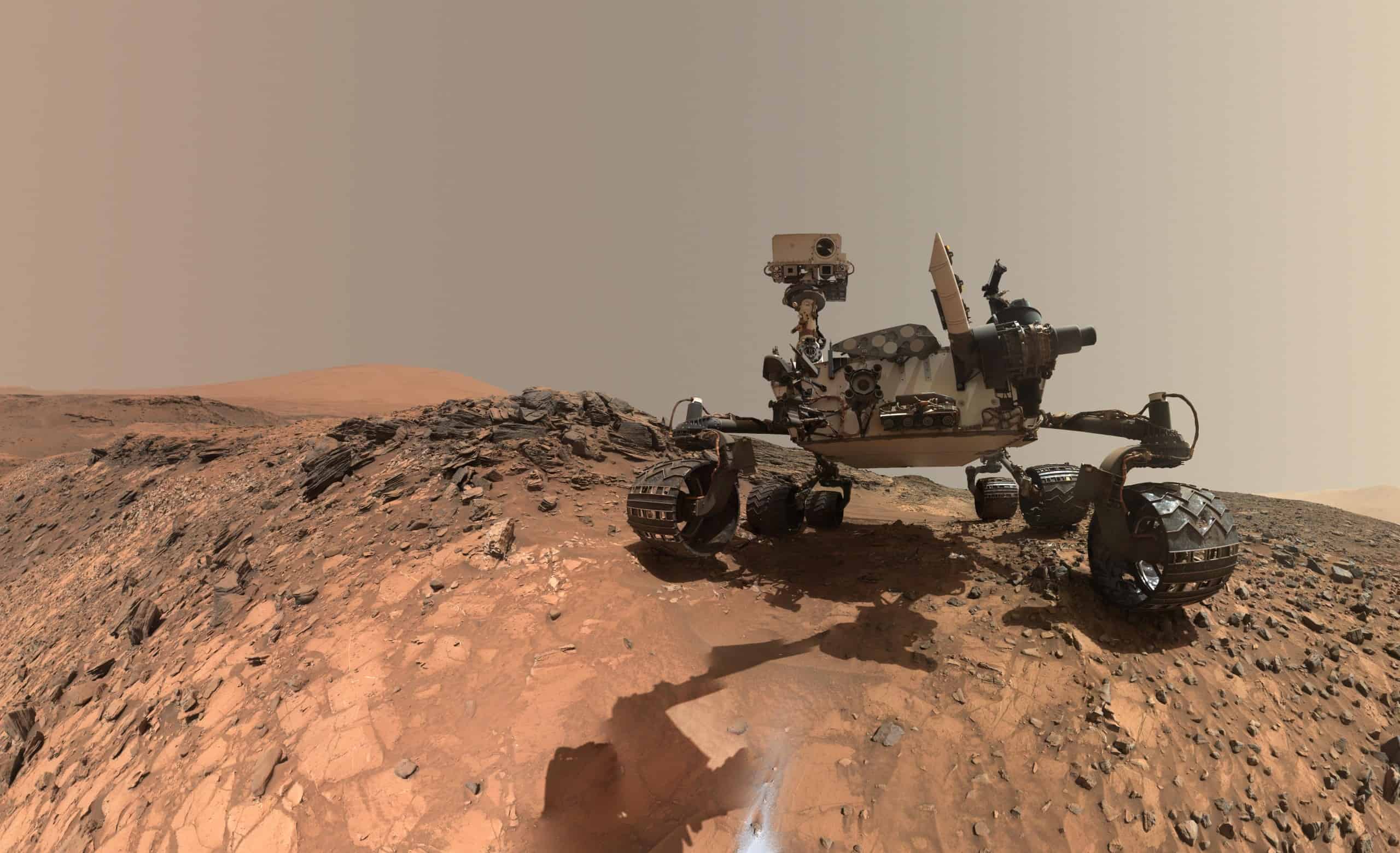There is a lot about space that we don’t know about, with scientists making discoveries all the time. One of the most mysterious planets is Mars. Known as the Red Planet, Mars is the fourth planet from the sun as well as the second smallest planet after Mercury. Mars gets its nickname from the reddish tint of its surface. The planet’s red color comes from iron oxide on the planet’s surface. As a terrestrial planet, Mars has a thin atmosphere. Its surface features many craters and divots similar to those seen on the moon and in the Earth’s polar ice caps, deserts, and valleys. Because of the way the planet rotates, its seasons and days are close to those on Earth. The largest volcano and second-highest mountain peak in the Solar System are Olympus Mons, located on Mars.
Currently, researchers are looking into whether Mars could be viable for human habitability in the future. Mars has been explored for decades, and there are presently eight spacecraft being used to investigate the Red Planet. Six spacecraft are orbiting Mars, while two are present on the surface. The rover Curiosity and lander InSight are equipped with cameras that capture what’s going on Mars’ surface. Curiosity and InSight travel across the planet and they have taken images of many unusual things on Mars. Keep reading to see what unique discoveries have been made on planet Mars!
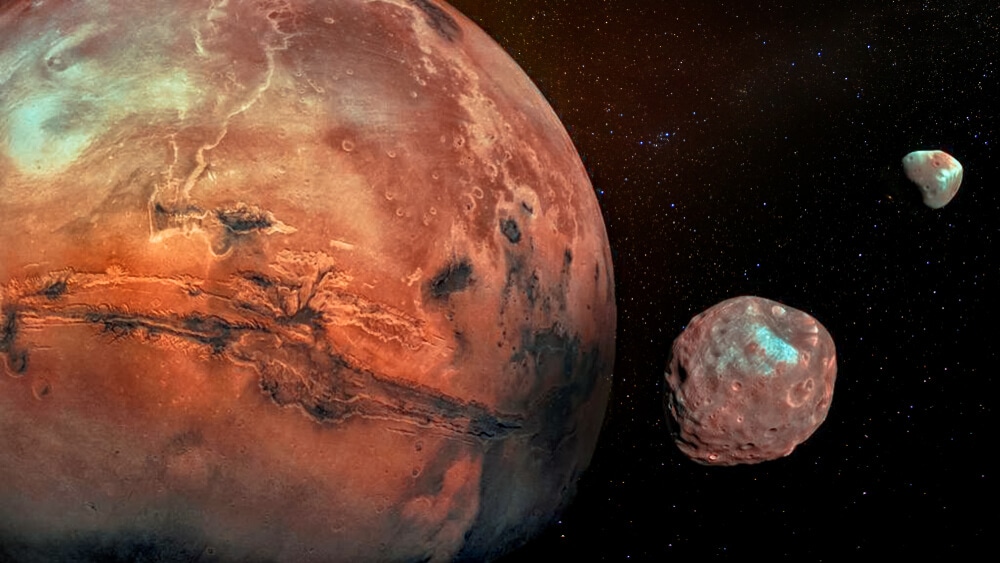
33. Mars is half the size of Earth but has twice as many moons.
You might be tempted to think that the number of moons that a planet has depended on how giant that planet is. Not so. Earth is 7926 miles in diameter and has only one moon, the big one you see up in the night sky, that orbits it. The Moon is Earth’s only proper natural satellite. It is one-quarter the diameter of Earth making it the largest natural satellite in the Solar System relative to the size of its planet. It is the fifth largest satellite in the Solar System and is larger than any dwarf planet.
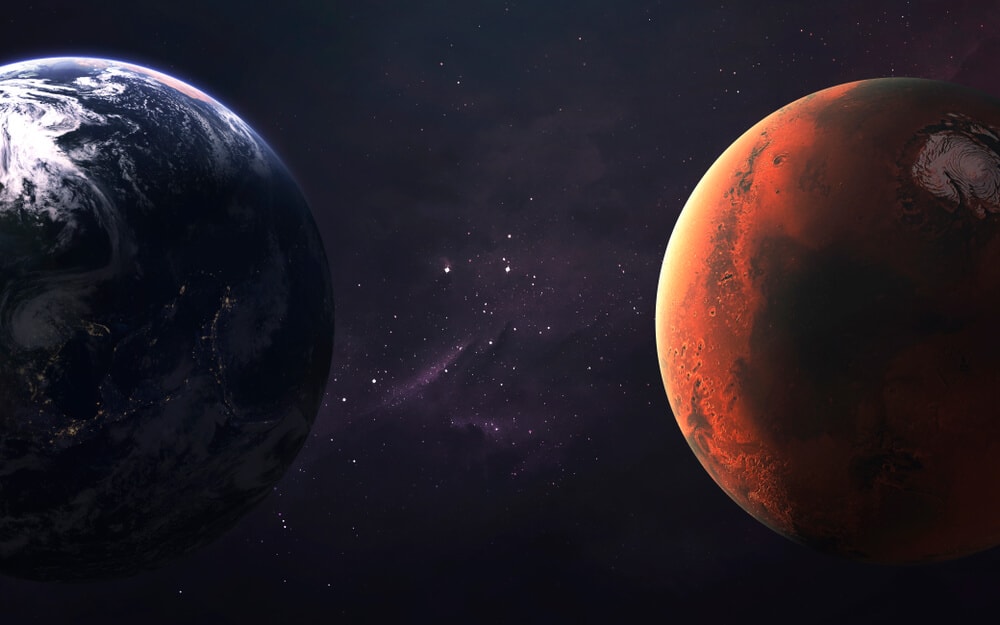
On the other hand, Mars is a puny 4220 miles in diameter, but it has two moons, named Phobos and Deimos. The Martian moons are relatively tiny, though; Phobos is 13.8 miles across, and Deimos is even smaller, at 7.8 miles. You probably drive further than the length of both of Mars’ moons on your daily commute. Oh, and another fun fact? The moons of other planets tend to get cool names, like Phobos. Earth’s moon is just called the moon.
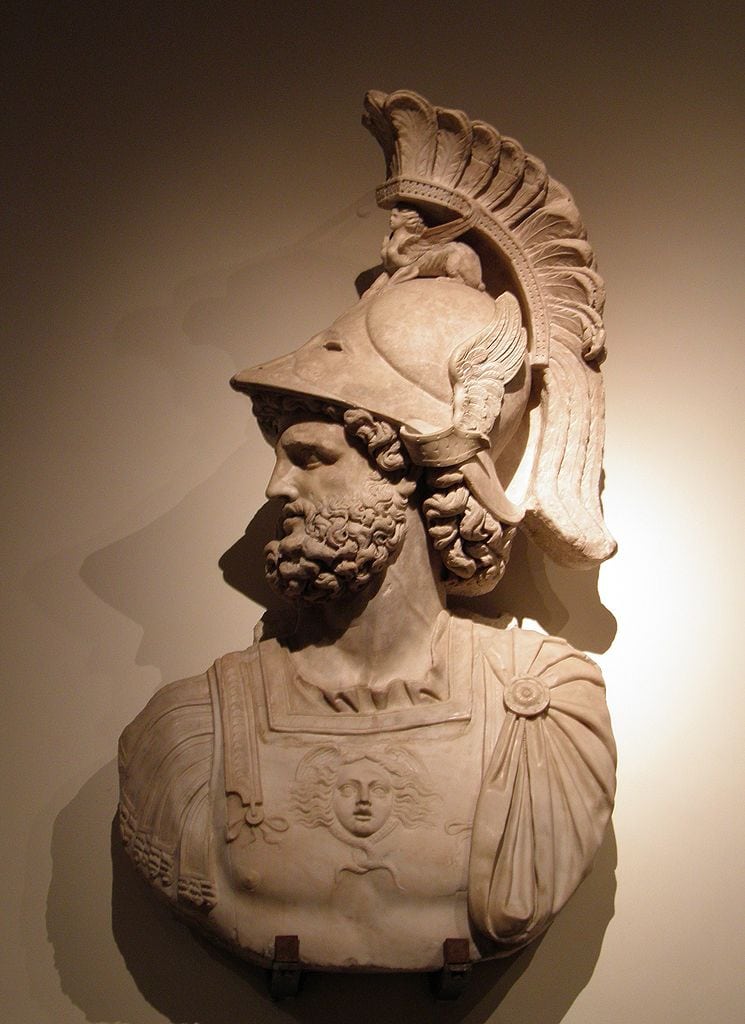
32. The Romans named the Red Planet after their god of war.
The telescope was not invented until more than a millennium after the fall of Rome. However, Roman astronomers still gazed up at the night sky and saw several distinct celestial bodies. They noticed that some of these bodies moved much more rapidly than stars and named them “planets.”
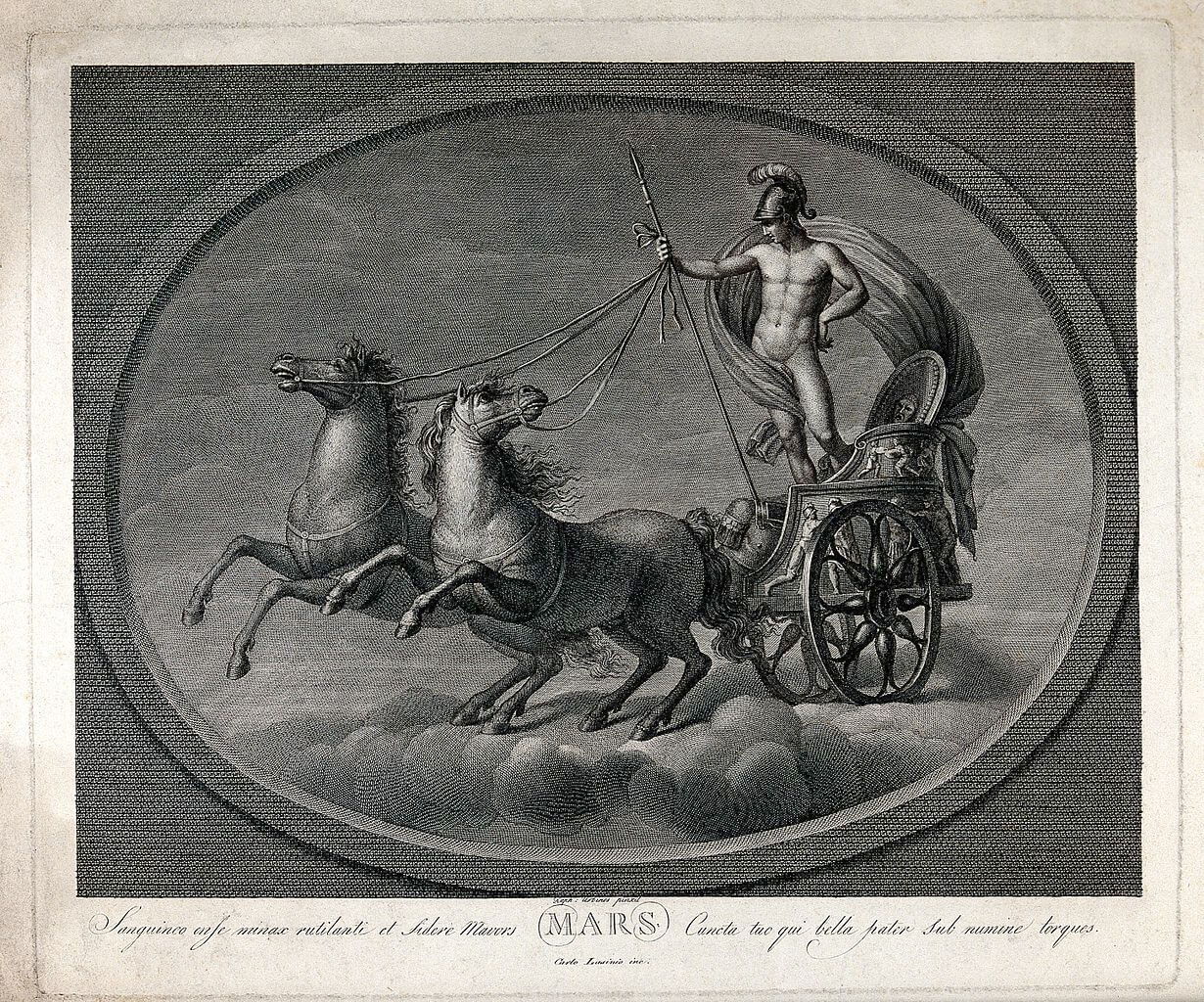
All of the planets in our solar system, except for the Earth, are named after Roman gods. The Romans called the red planet Mars, thinking that it bore a resemblance to their war god. Why the connection? Well, war inevitably leads to a lot of blood, and blood is, well, red.
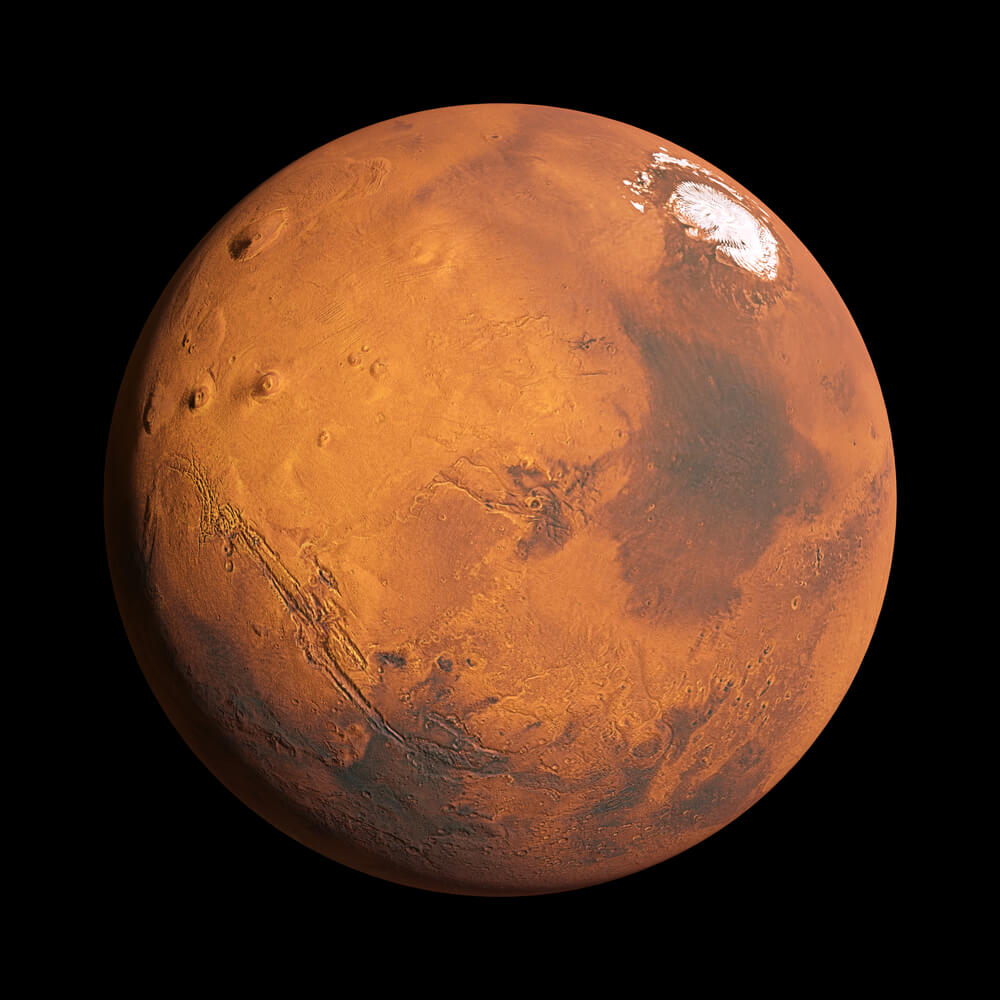
31. Mars has only 38 percent of Earth’s gravity.
If you are trying to lose weight and the keto diet is not helping you, one alternative may be to go to Mars. Because the planet is so much smaller than Earth, its gravity is much lower — nearly two-thirds lower than Earth’s gravity! Between this difference in size, mass, and volume, Mars’s surface gravity is 3.711 m/s2, which works out to 37.6% of Earth’s (0.376 g). In terms of their orbits, Earth and Mars are also quite different.
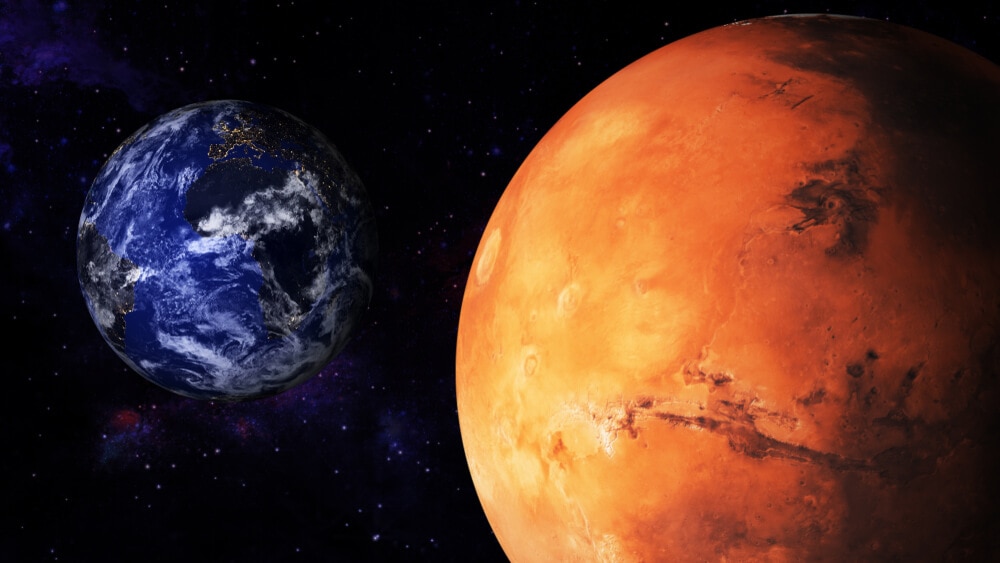
Lower gravity means that things weigh less. So if you weigh 100 pounds on Earth, you would only weigh 38 pounds on Mars. Somebody who weighs 300 pounds here would, in the Martian atmosphere, find himself or herself to be a svelte 115. But the problem, at least for now, is getting to Mars, so you may want to keep trying the keto diet for a few more decades.
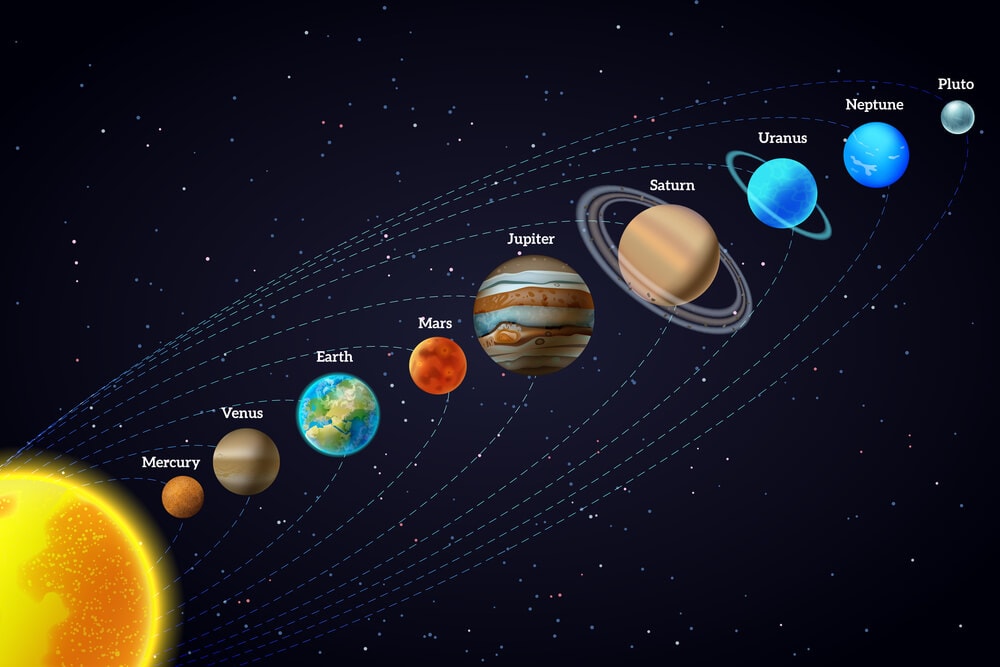
30. It is much, much farther away from the sun than Earth.
Earth is about 93 million miles away from the sun. However, that number changes depending on the orbit the Earth is experiencing at that given moment. Most of the planets have elliptical rather than circular orbits, and the Earth is closer to the sun in winter than in the summer. Being much farther from the sun, Mars is much colder than Earth. However, scientists believe it is not too cold for life.
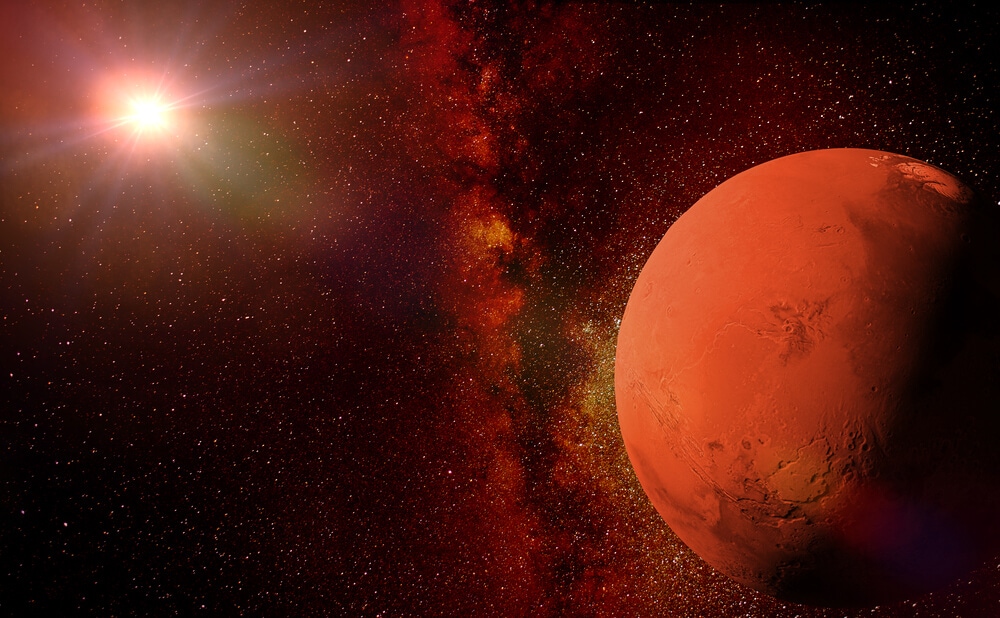
Mars is an average of 142 million miles away from the sun, placing it just outside of what scientists call “the Goldilocks zone.” If you remember the story of Goldilocks and the Three Bears, you recall that one bowl of porridge was too hot, one was too cold, and one was just right. The Goldilocks zone refers to the area around a star where a planet is not too hot, not too cold, but “just right” for life to thrive.
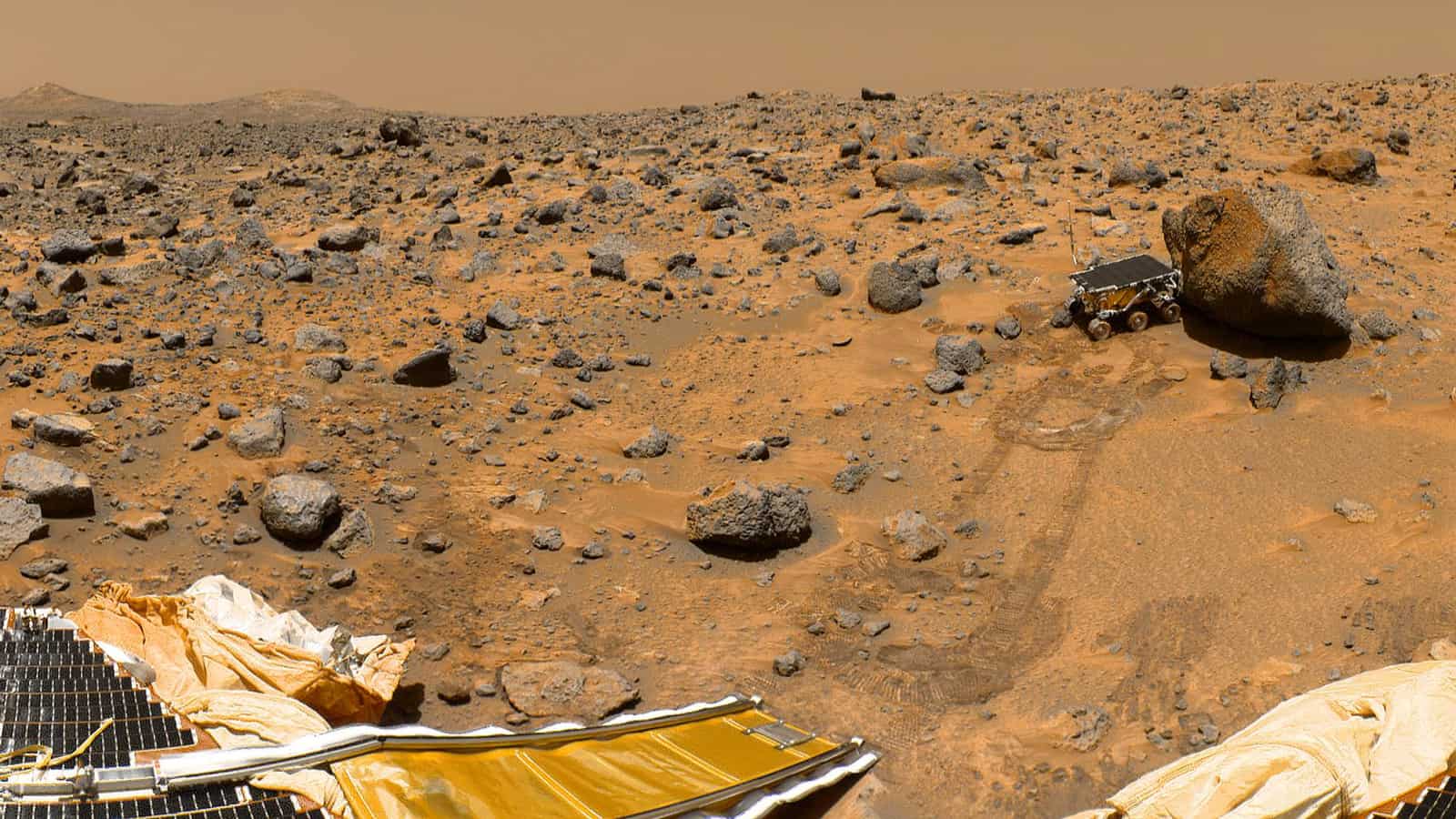
29. Martian years are twice as long as Earth years.
How long is a year? Well, the answer depends on what planet you are on. A year is defined by how long a world takes to orbit around the sun, so one year for planets that are much farther out in the solar system is more than 200 years on Earth! Mercury and Venus, which are closer to the sun, have shorter years than we do because they zip around more quickly.

Because Mars is farther away from the sun than the Earth is, its years are about twice as long. That means that its seasons also last twice as long, and it’s brutally cold winters — with known temperatures that get down to -280 Fahrenheit — probably last for more than one full earth year. Martian summers might be quite pleasant because the highest recorded temperature is only 86 degrees Fahrenheit, compared to 136 on Earth.
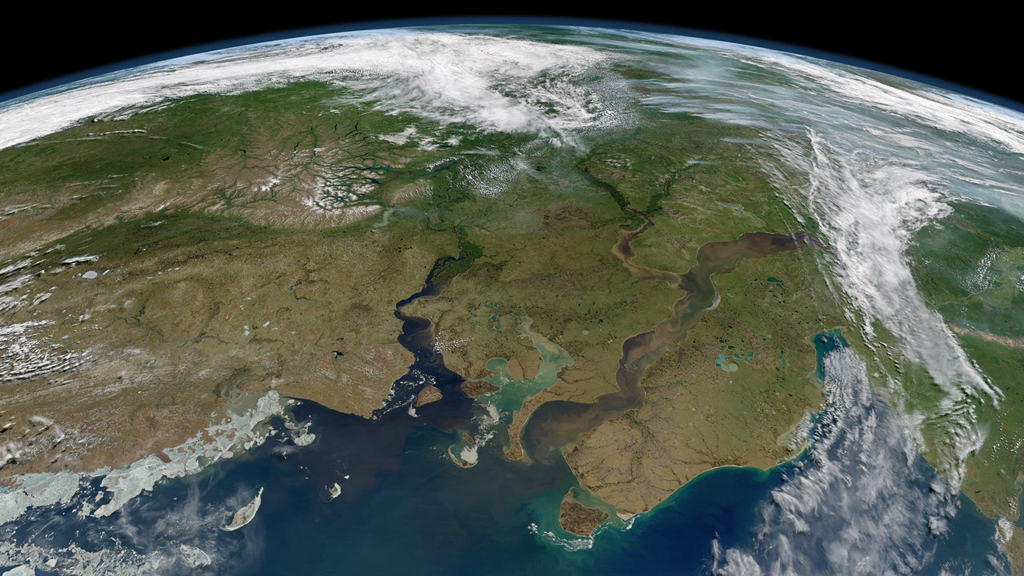
28. The Martian atmosphere is very different from Earth’s.
The two most abundant elements in the solar system are hydrogen and helium, and they form the bulk of the composition of both the Earth and Mars. However, there are also many other elements in Earth’s atmosphere, many of which are created by the respiration of the organisms on Earth. For example, our atmosphere has enough oxygen for humans and animals to thrive because plants breathe in carbon dioxide and breathe out oxygen.
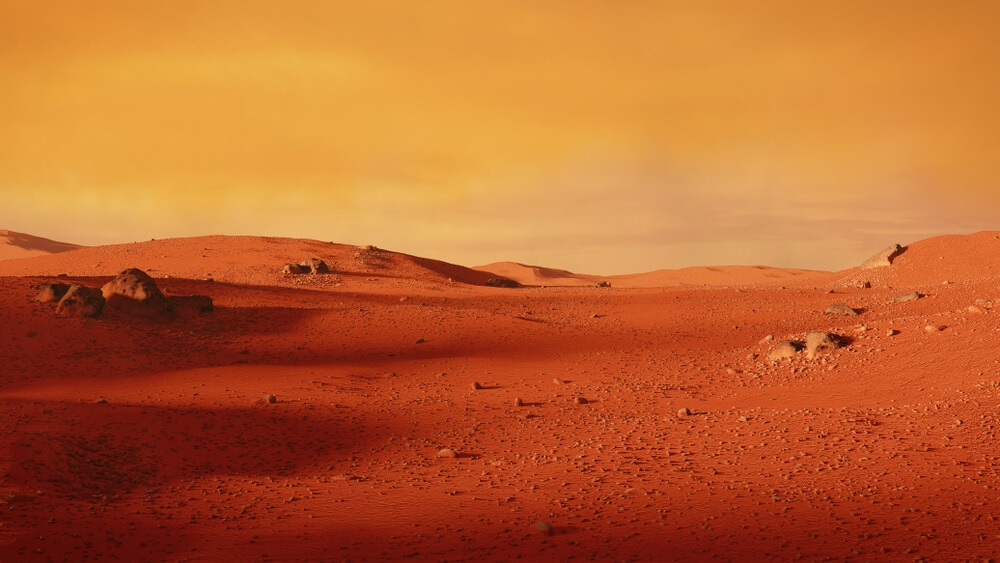
Mars, on the other hand, does not have plants to convert its carbon dioxide into oxygen. Fully 96 percent of its atmosphere is carbon dioxide, so there is no way that humans could live in those conditions. Furthermore, its atmosphere is 100 times less dense than Earth’s, so even if we could solve the oxygen problem, we would have a lot more challenges to overcome before living there.
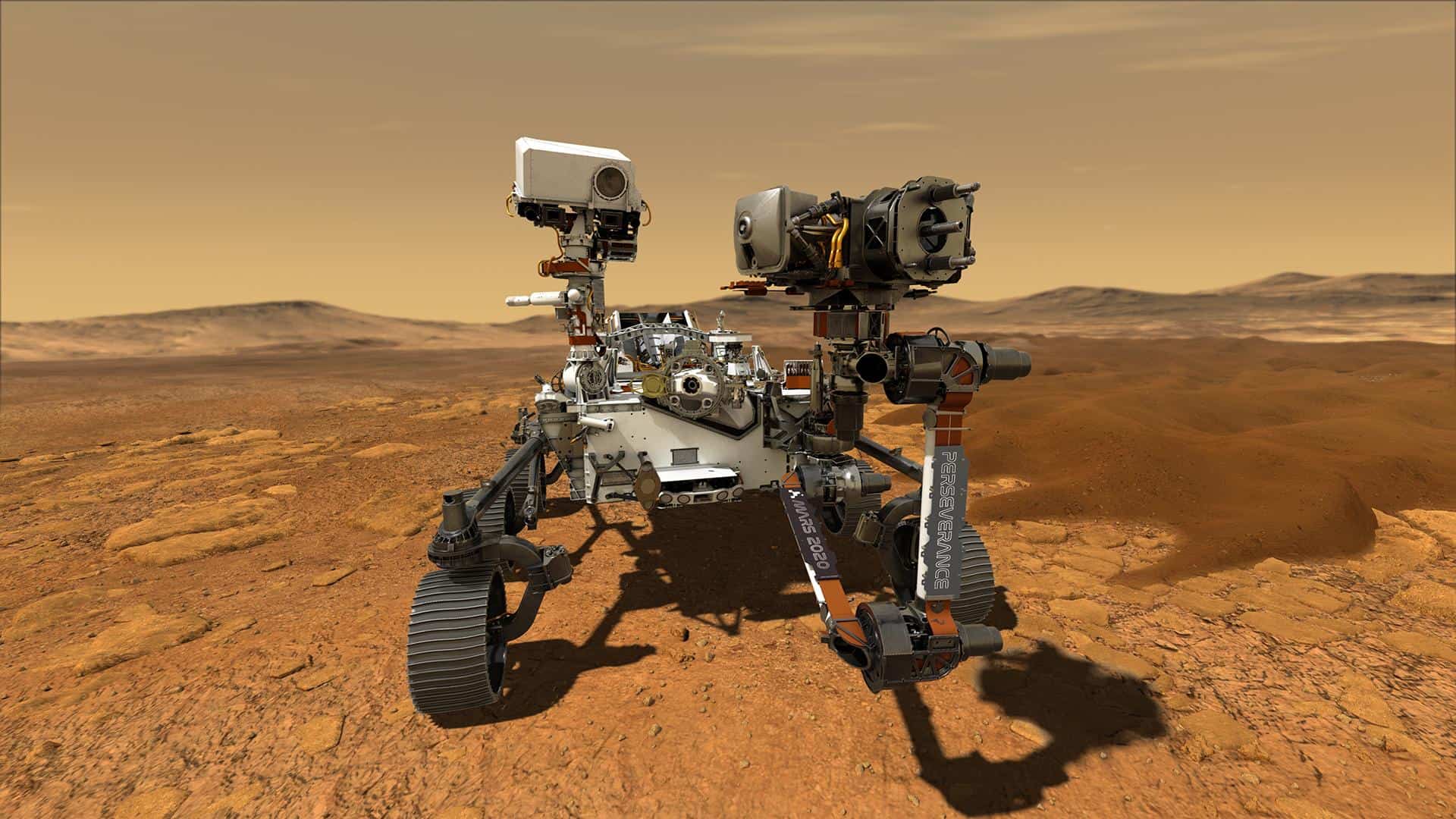
27. Colonizing Mars will present significant challenges.
Mars is remarkably different from the Earth’s dreams of traveling there and creating human settlements that look more like sandcastles in the air or castles out in space. We can’t breathe the air. The temperature is too cold for human habitation. There are no plants to stabilize the atmosphere. After the Earth, Mars is the most habitable planet in our solar system due to several reasons: Its soil contains water to extract. It isn’t too cold or too hot.
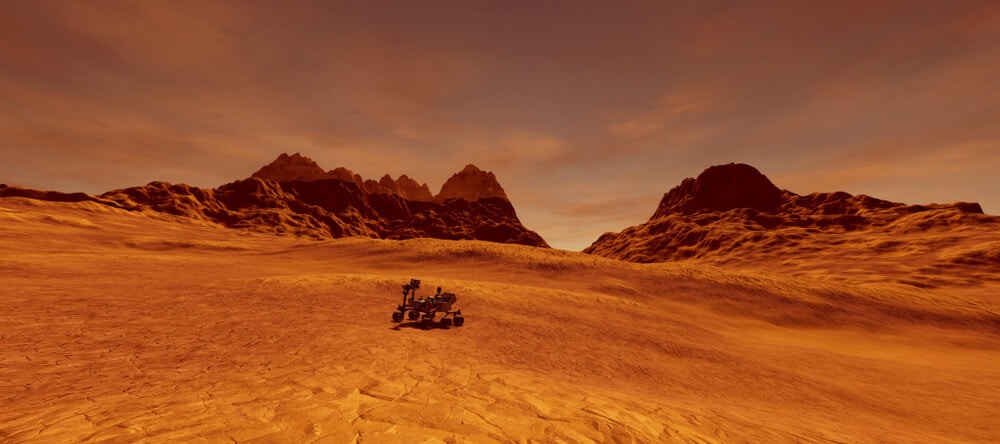
Scientists are looking at ways to send humans to Mars for short-term exploration projects. However, before we can even consider the possibility of building a Martian colony of humans, we will have to do some planet-sized problem-solving. Like figuring out how to build a breathable atmosphere or make humans walk on the low-gravity Martian surface without just floating off into space.
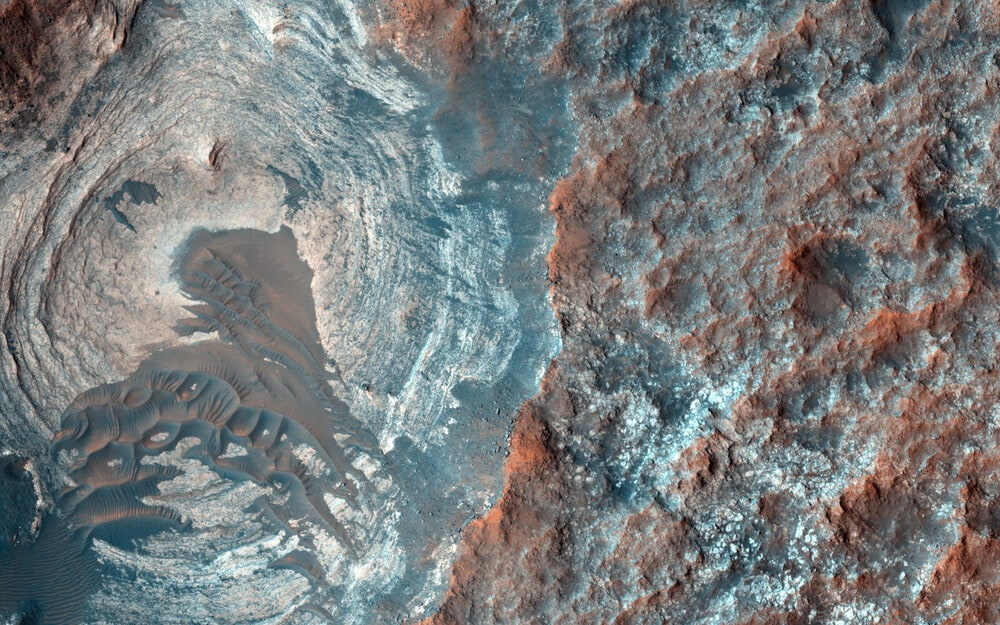
26. Imagine trying to grow food on Mars.
If we want to consider building a civilization on Mars, we may want to step back into our history books and look at the necessary ingredients that societies need. Ingredient number one? Food. People’s most basic need, for nourishment, has to be met before they can begin to settle down into cities and develop a civilization.
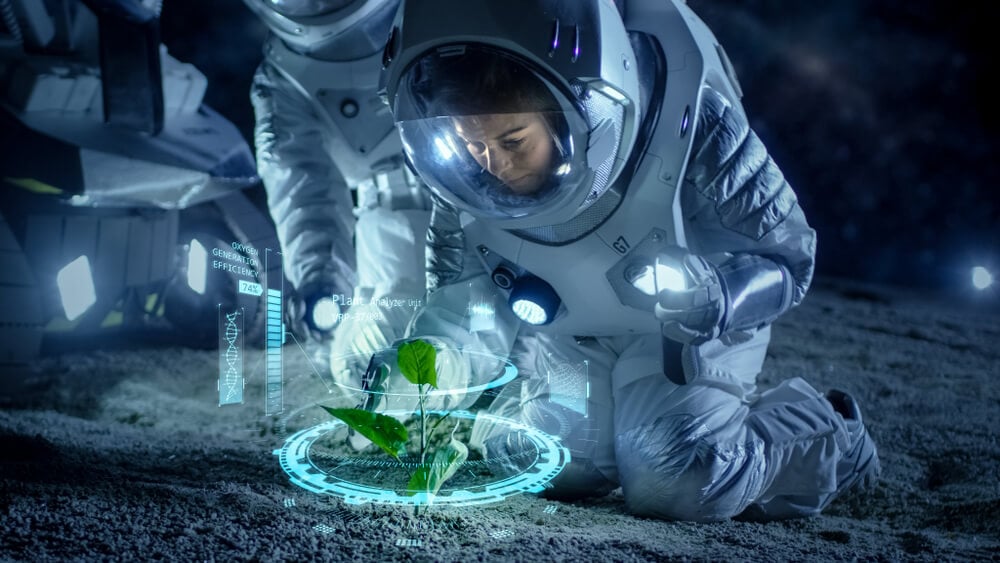
Plants on Earth require sunlight to create energy, but Mars receives only a fraction of the Earth’s sunlight. So even if soil and atmospheric conditions were adequate for growing plants, we would have to engineer a solution to their photosynthesis problem. And no, we couldn’t just bring a whole lot of protein bars to Mars. We would run out before even arriving. Building a sustainable Martian colony would require a sustainable, self-perpetuating food supply.
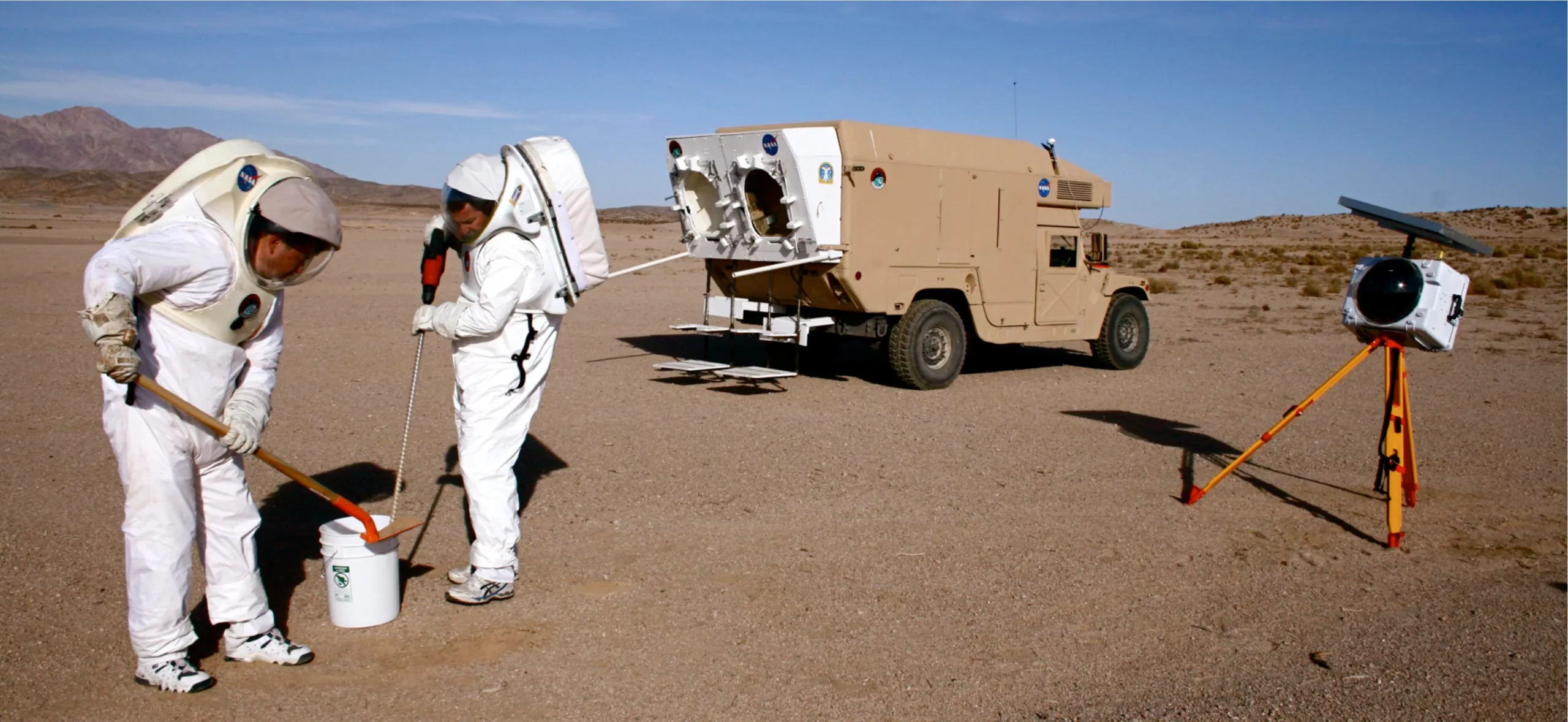
25. Still, some scientists believe that the only way for humanity to survive is to become an interplanetary species.
Given the challenges, humanity is facing just in this present generation, with wars, a global pandemic, droughts, famines, wildfires, and extreme weather patterns caused by global warming, plenty of people are rather pessimistic about the future of humanity. And they aren’t alone.
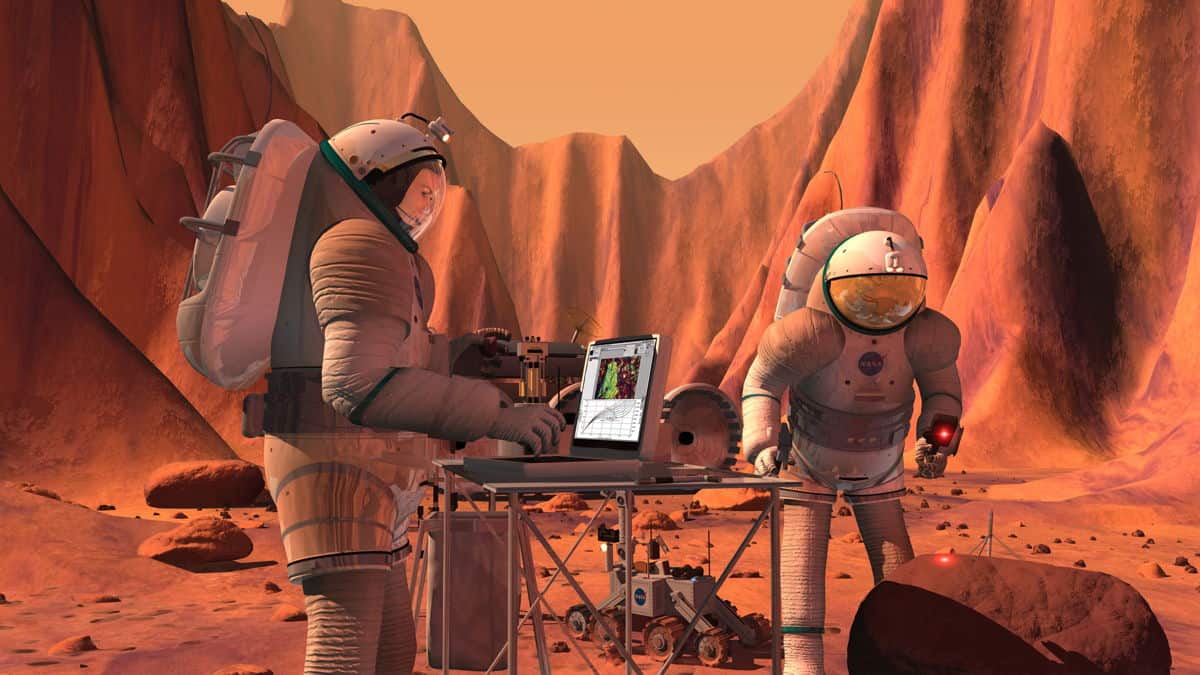
Scientists predict that the Earth will enter the stage of its life at some point, at which it will begin to expand and hit the Earth drastically. When it becomes a red supergiant, it will swallow the Earth altogether. And before that happens, we could easily get hit by a giant asteroid, like the one that wiped out the dinosaurs. To survive the challenges on this planet and challenges from outer space, many believe that we will have to find a way to live on a planet other than Earth.
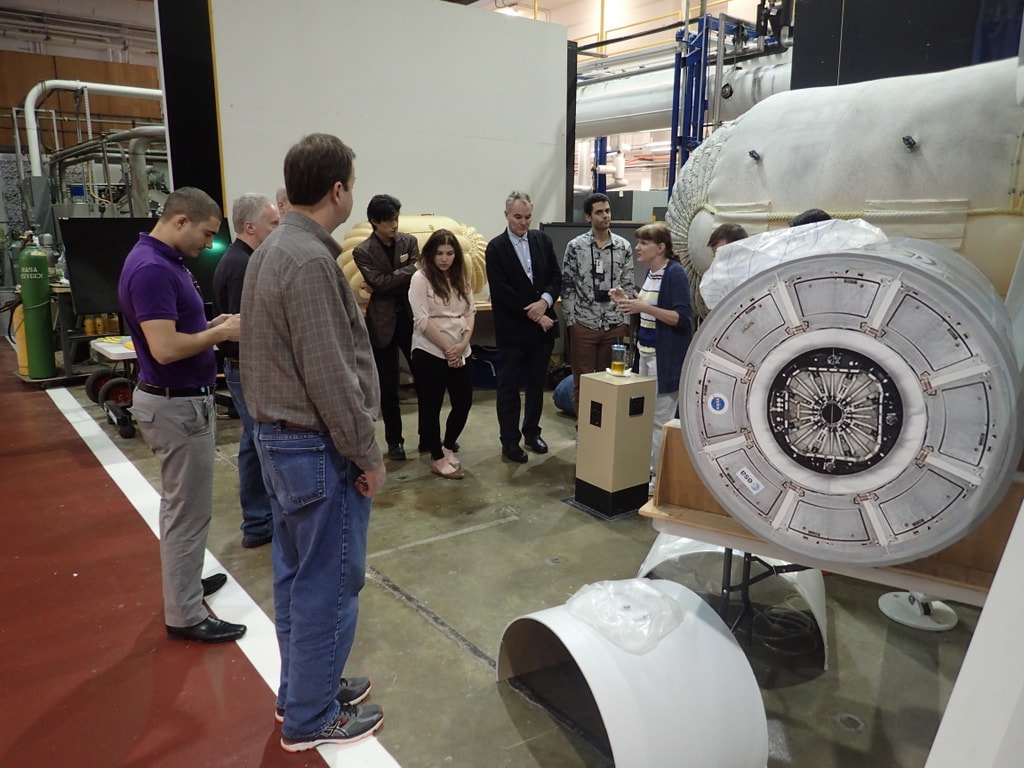
24. If your great-great-grandchildren end up living on Mars, they will encounter some pretty weird things.
You can probably tell by now that living on Mars if we are one day able to get that far, will be very, very different from living on Earth. Moreover, there will be many cool things that people who live on Mars will see, like what appears to be a face in the sand and strange wind patterns that have created what looks like Morse code.

The night sky will also be very different, given that instead of the one giant moon that we see here on Earth, people living on Mars would see two tiny moons that orbit the planet quite rapidly. Stars will appear to be in a different place altogether, and the sunrise and sunset will look nothing like they do on Earth.
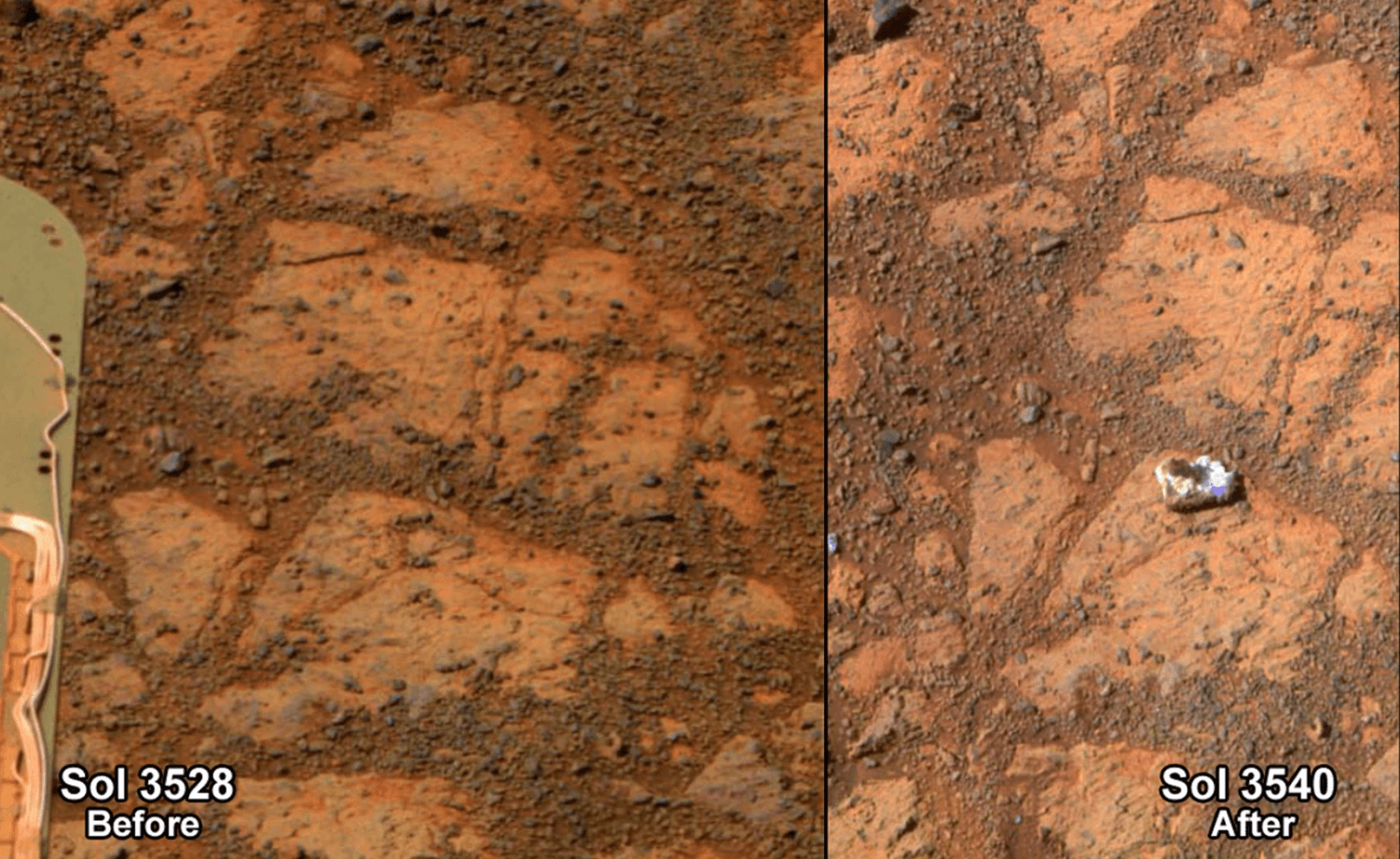
23. If you are hungry, you might think this is a real jelly donut.
On January 8, 2014, Mars rover Opportunity captured an image of a rock that looked strangely like a jelly doughnut. Pictures taken a few days before in the same spot did not show the same object. Many people considered aliens, or a meteorite collision could have been responsible for the jelly doughnut.
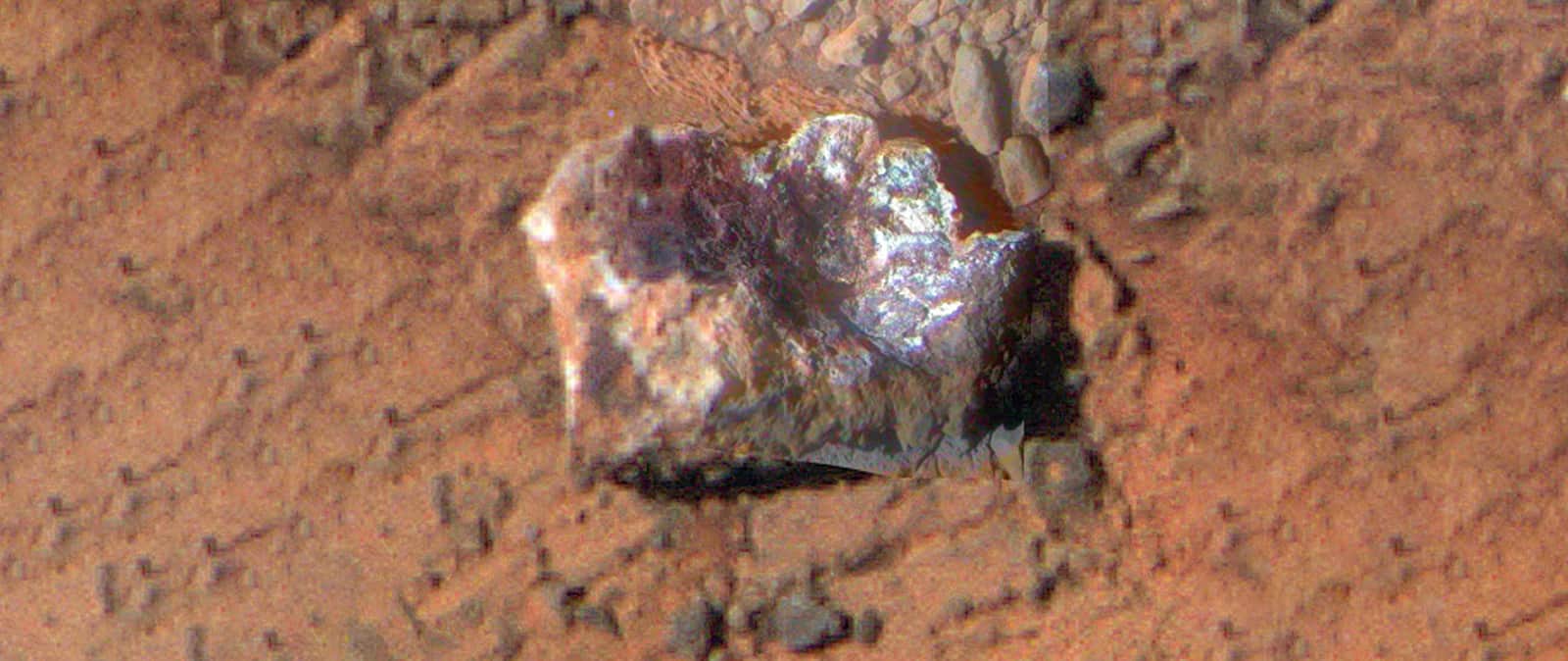
Some concerned citizens believed that the jelly doughnut could be evidence of fungus growing on Mars. Scientists eventually realized that the jelly doughnut was simply a rock. Opportunity’s wheels most likely kicked up the rock. While it looked like a tasty treat was present on Mars, it was just a simple rock formation!
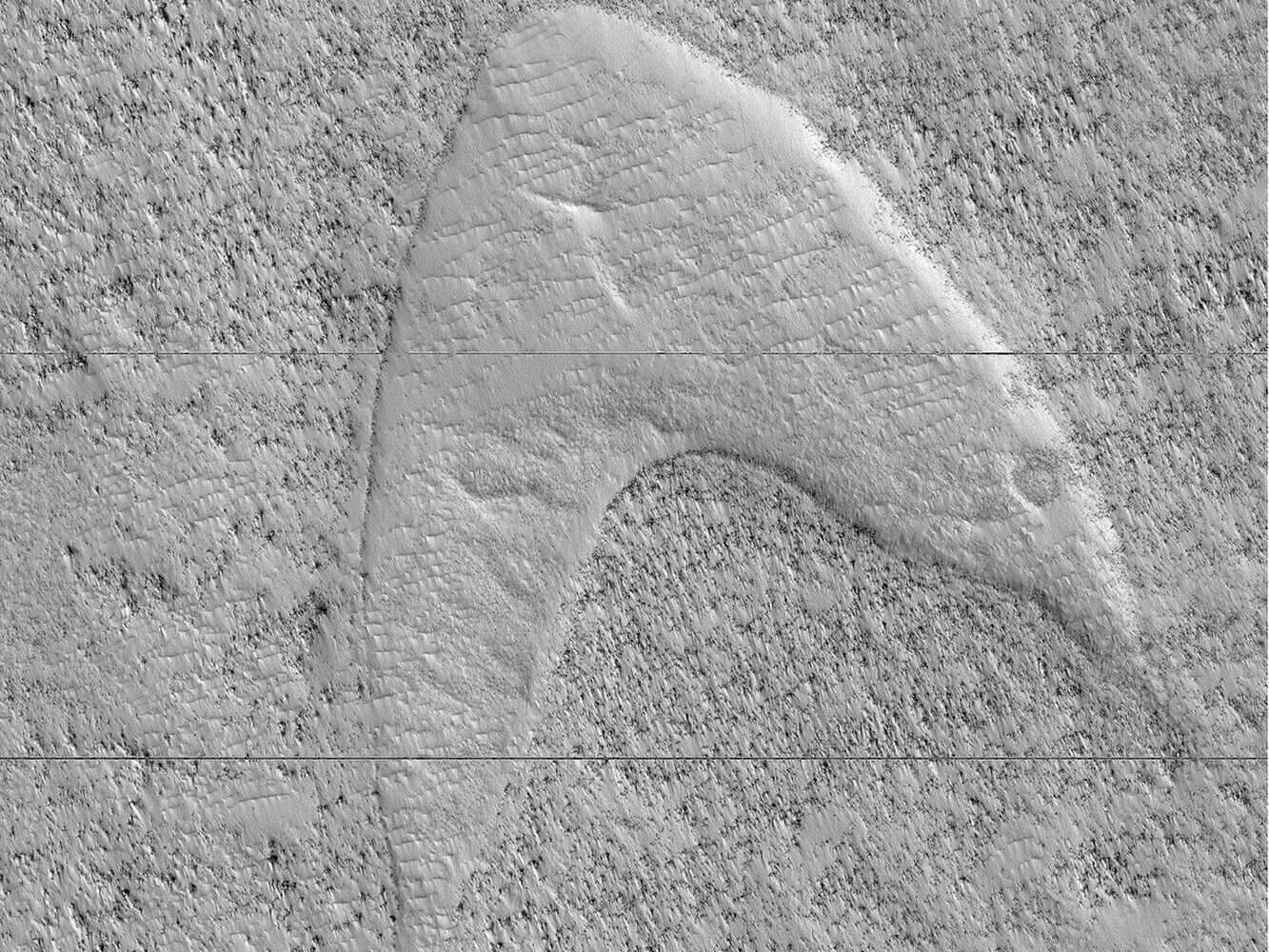
22. This image kind of looks like a Star Trek logo on the Martian surface.
When you think of space, you may think of famous space movies like Star Wars and Star Trek. It seems as though the Star Trek crew has landed on Mars too! Recently, researchers spotted a formation on Mars’s surface that resembled Star Trek’s iconic Starfleet logo.
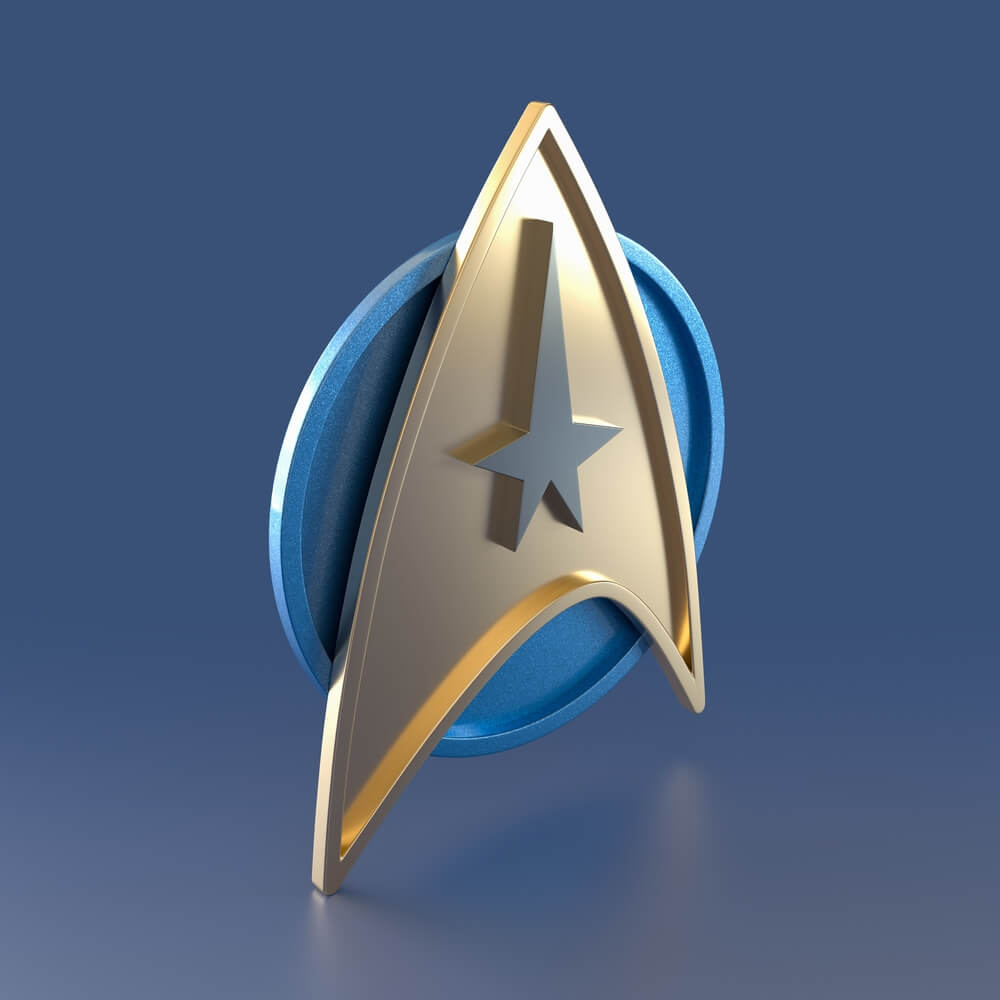
This dune was found in Hellas Planitia, a massive planet in the Southern Hemisphere of Mars. The chevron shape captured by a camera was not the first one found on Mars’s surface; other Star Trek-shaped images may have been seen. Experts believe that lava, wind, and dune interactions contributed to this giant Star Trek-inspired formation.
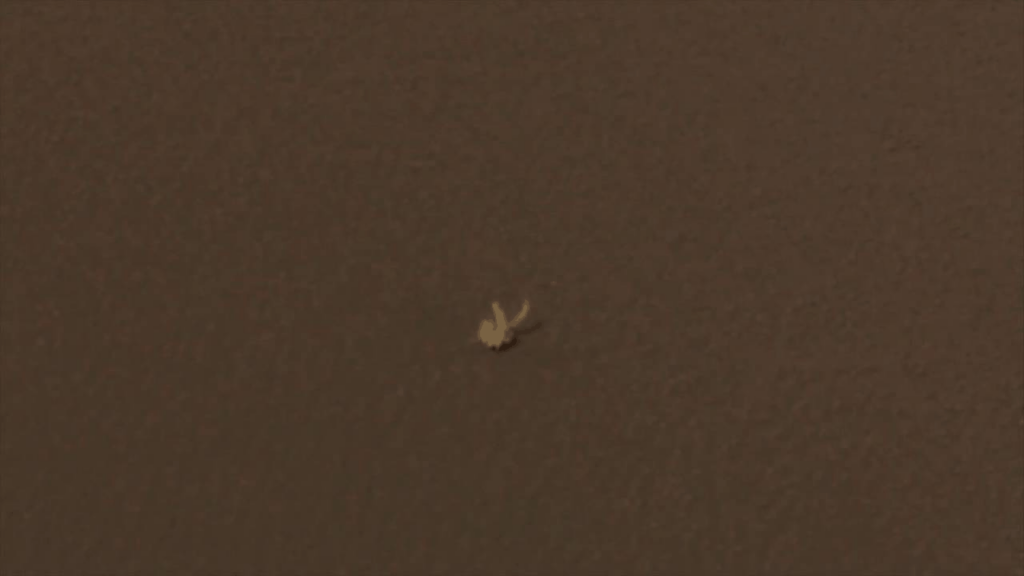
21. The Opportunity Rover found what looks like a bunny rabbit.
While the Opportunity rover never discovered life on Mars, it did find an animal-shaped object. In March 2004, roughly two months after it was put on Mars, the rover used its panorama function to capture a “bunny rabbit” on its surface. The object was soft, as it moved slightly in the weak winds of Mars’ atmosphere.
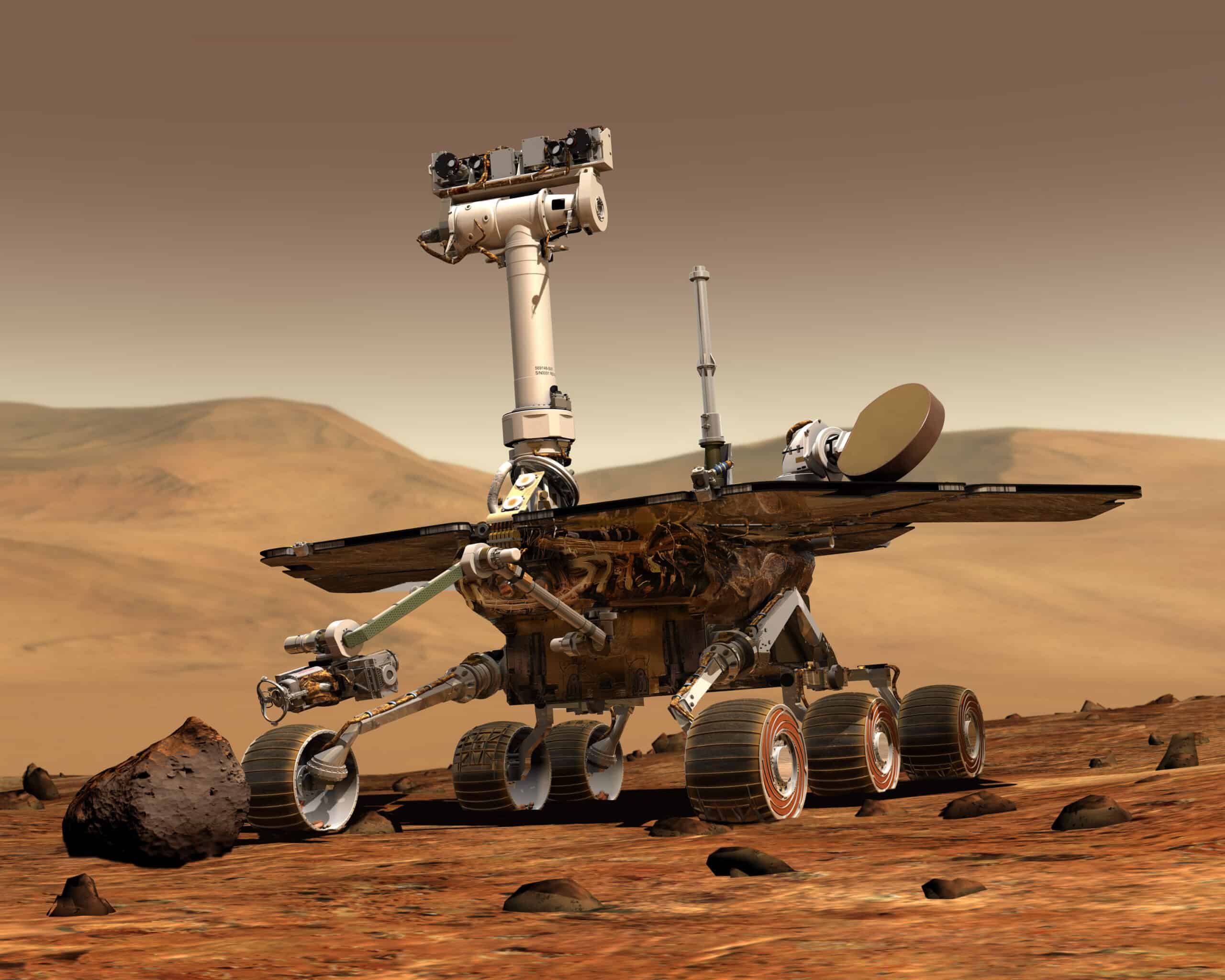
The bunny ears were yellow in color and measured about 2 inches long. Researchers monitoring Opportunity’s images believed the object originated on the rover and somehow dropped onto Mars as it was traveling. The item has never officially been identified, but many think it was an adhesive used for aerospace applications called Kapton tape.
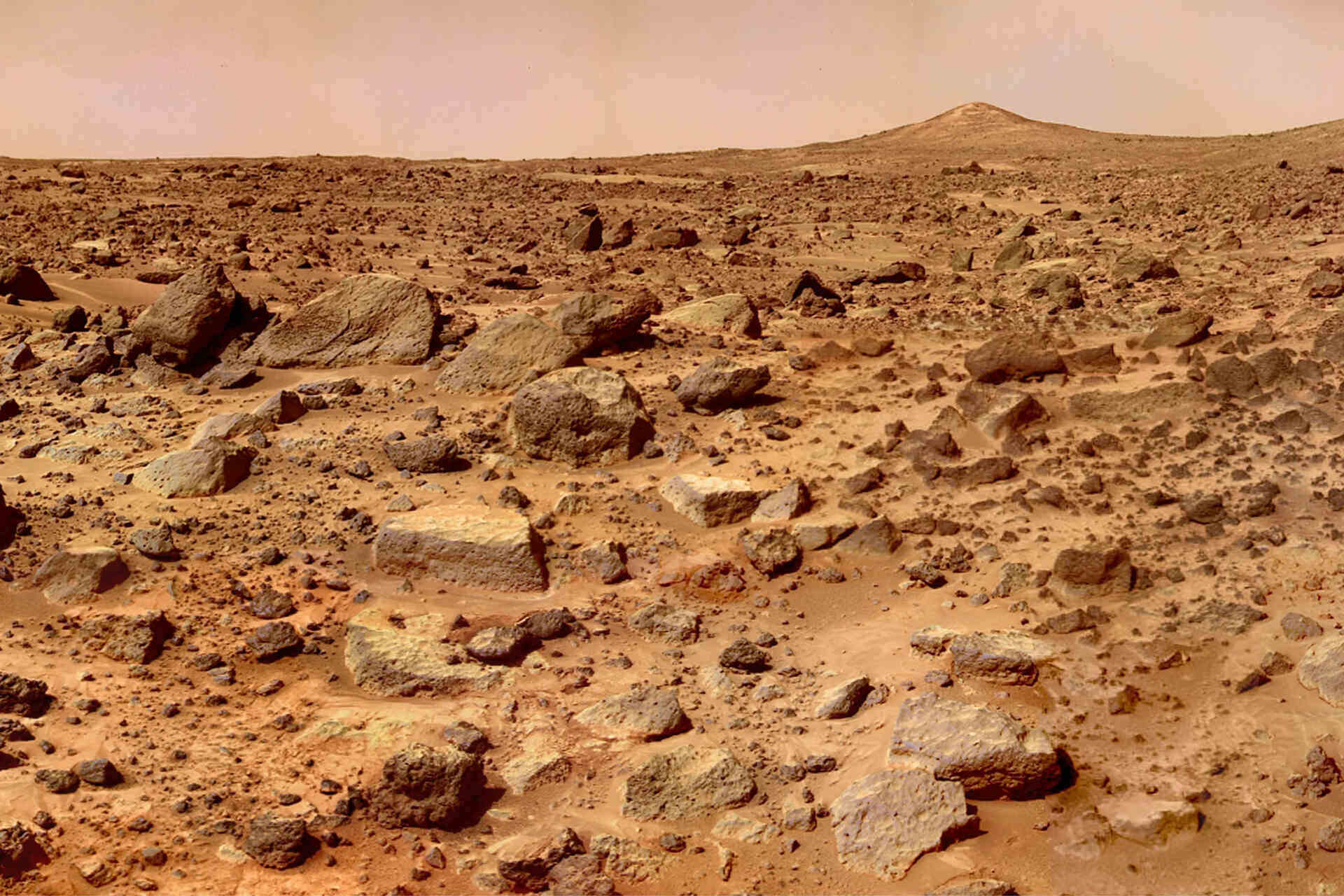
20. The Martian surface is arid and dusty.
Think about what the Earth’s surface is made of. Lots of minerals, like iron, silicon, and copper, and much organic matter. When plants and animals on Earth die, they decompose and create nutrient-rich soil, which then nourishes a new generation of plants and animals.
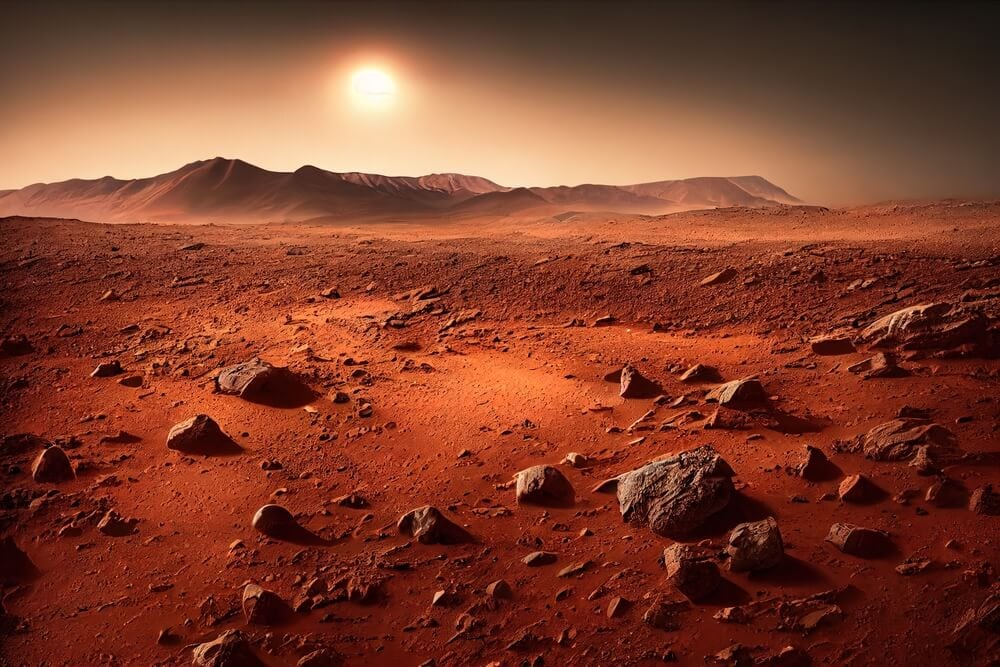
Mars does not have the organic matter that the Earth does, but it has high mineral content, especially iron. Its surface is red in color because of the high amount of iron oxide, just rust. Most of Mars’ surface is rocky, dusty, and extremely dry, basically a planet-sized desert.

19. Whose face is on Mars? Nobody’s — it’s a two-mile hill formation.
One of the most iconic images captured on Mars was the human face. Taken back in 1976 by NASA’s Viking 1 Orbiter, the object captured resembled two eyes, a nose, mouth, and an unusual hairstyle. Some even say it looks like a young Elvis Presley!
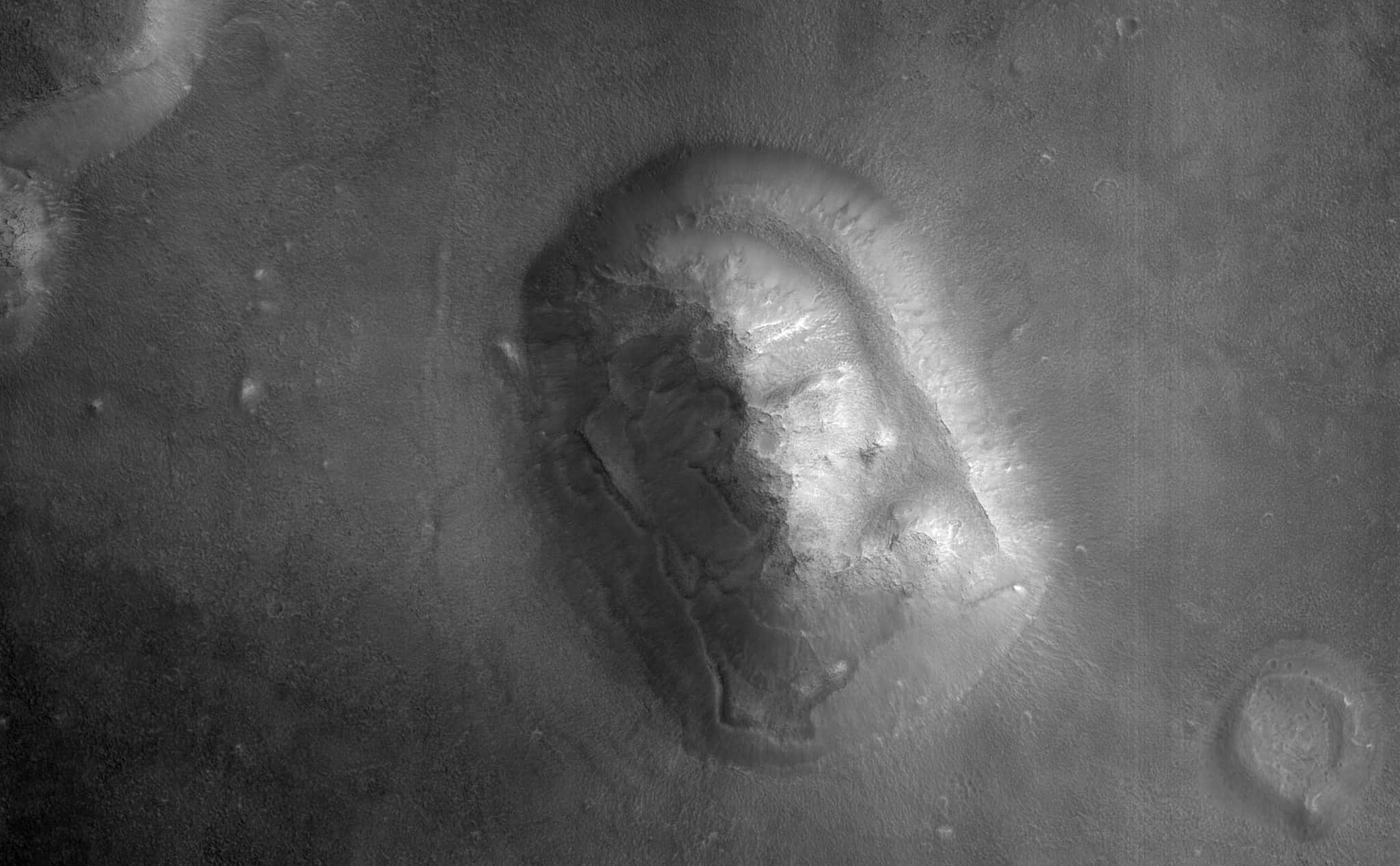
While the picture makes a face look small, it stretched nearly two miles from end to end. Many people believe that this formation is evidence of life on Mars, and when it was discovered, it became a worldwide sensation. Ultimately, Mars’ face is simply a mesa in the landscape, but it’s an exciting piece of space history.

18. Rovers exploring the Martian surface have left interesting tracks.
Please leave it to the internet to take an innocent picture from space and turn it into a meme. An image taken on the Red Planet’s surface of tire tracks left by NASA’s Spirit rover went viral nine years after it was taken. The picture shows the rover tracks in the shape of a phallus. Oh, and with the low gravity and thin atmosphere, wind likely won’t be blowing those tracks away anytime soon.
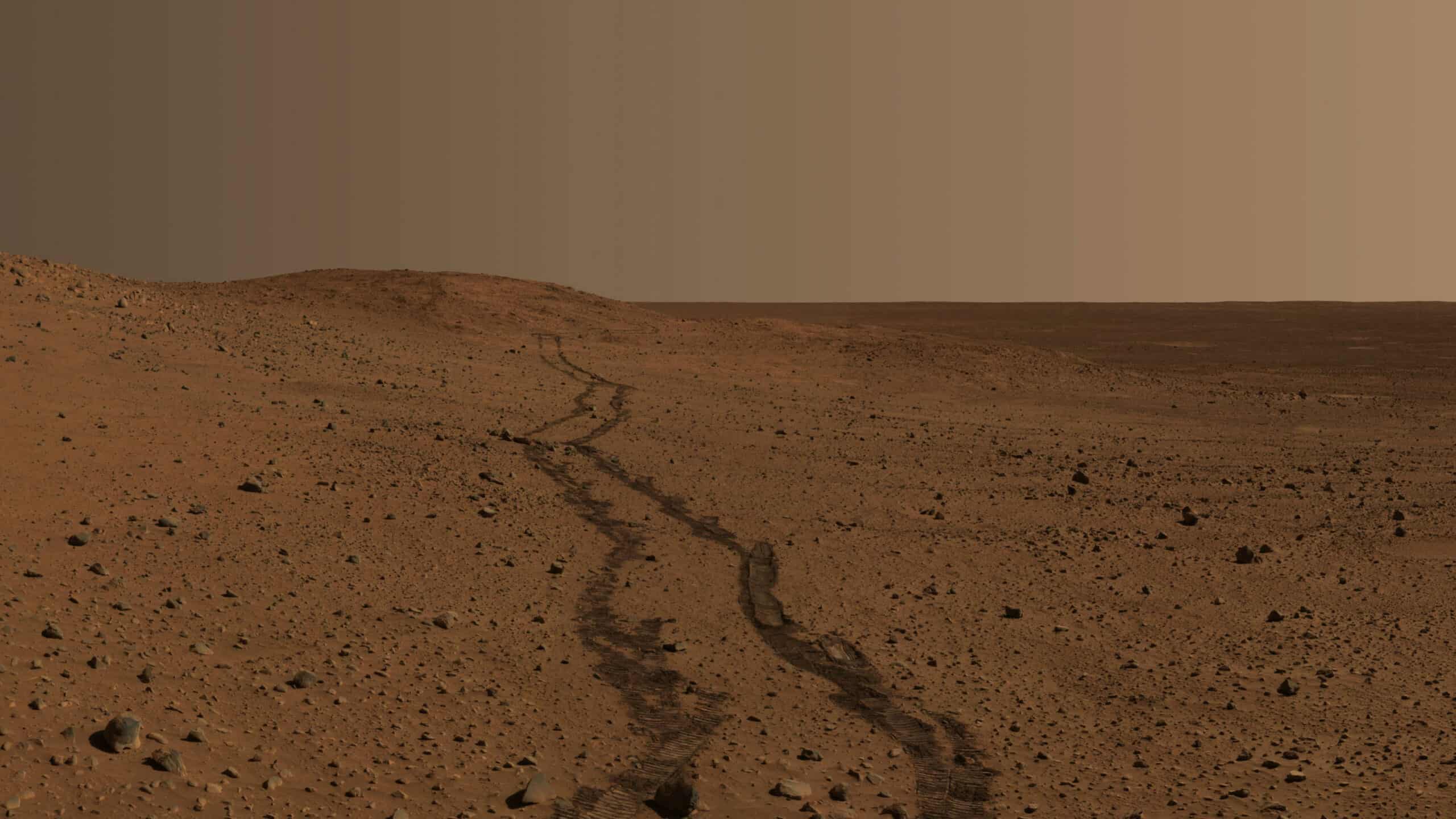
Many believe that the engineers in control of the Spirit Rover purposely created the tracks because they were bored, but that’s not the case. Evidence shows that the Spirit rover’s six wheels naturally started that shape when it made a turn. Current Mars rovers like Opportunity and Curiosity also have made track imprints that look like that.

17. Is that a human thigh bone? Nope, just rocks.
In August 2014, NASA’s Curiosity rover captured an image of what looked to be a large femur bone from a thigh. Lying among dirt and rocks, the thigh bone stood out for its size and resemblance to a human leg. Of course, this discovery leads space fanatics to get excited about the possibility of alien life on Mars.
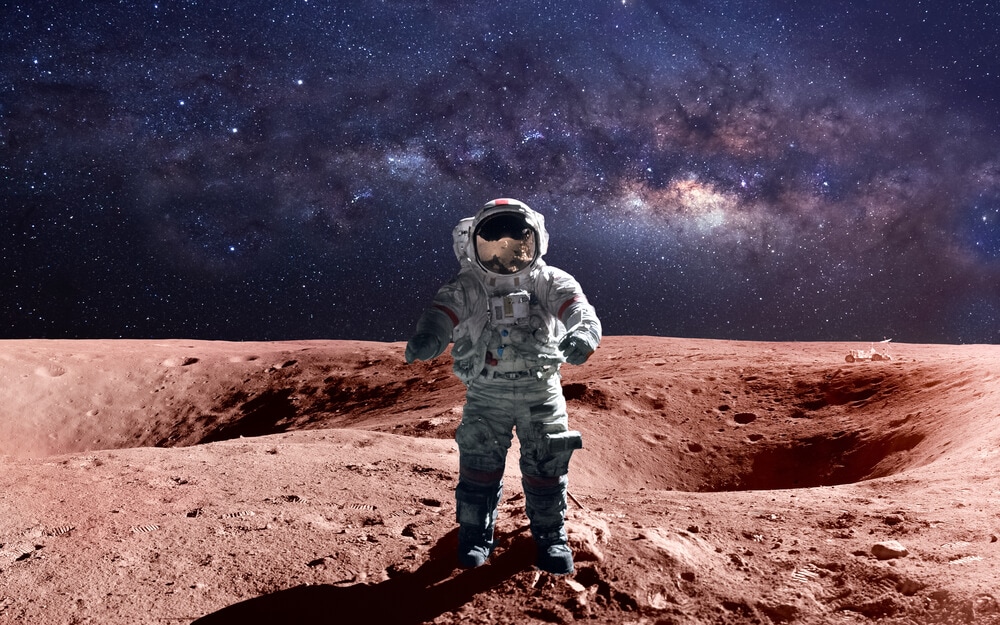
Scientists, of course, debunked the idea of alien life almost immediately. They insisted that the thigh bone was a rock that was shaped by water and wind erosion. Also, the thigh bone was crooked, and human bones are straight. Experts believed that if life were to be found on Mars, it would be in the form of simple life forms called microbes. The atmosphere on Mars is too thin to sustain complex organisms.

16. These spheres look like a blueberry patch.
Another great Mars mystery is the discovery of spheres on the Red Planet. Known as blueberries, these small, round objects are among many round, smooth stones found on the surface of Mars. The Opportunity rover discovered the first patch of blueberries near its landing site shortly after arriving in 2012.

The Blueberries get their name from their blue hue, which is caused by their iron-rich nature. The chemistry of these rocks could indicate that at one point, Mars was an incredibly wet planet. Scientists are working to figure out how the blueberries were formed to see what sort of life, if any, once resided on the Red Planet. Research is being done in Utah and Mongolia, where rock formations similar to Martian blueberries have been discovered to study their origins further.

15. A pebble on Mars is the size of a cannonball.
In late 2016, images of a smooth, spherical object were taken by NASA’s Curiosity rover. Alien enthusiasts insist that this proves that extraterrestrial life exists on Mars and that this is a weapon used in an intergalactic war. The real answer is much less complicated. This cannonball is a pebble that gets its smooth surface from wind erosion.
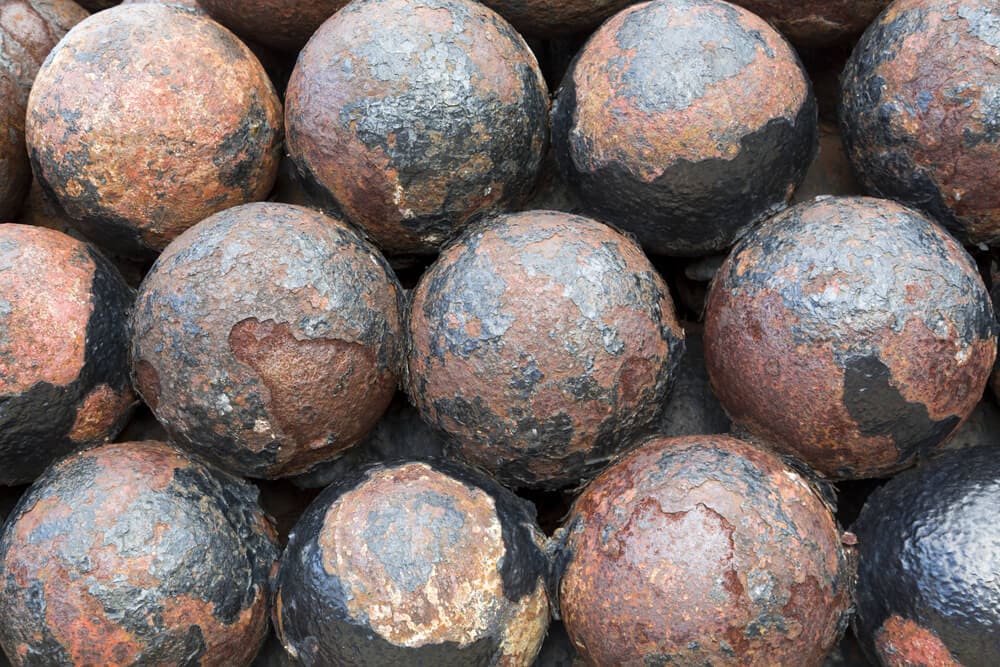
The Mars cannonball differs from the blueberries found by Opportunity. The blueberries are rich in iron and hematite, while the cannonball comprises magnesium, calcium sulfate, and sodium. The cannonball is roughly 5 millimeters in size, but the blueberries closely resemble BB pellets.
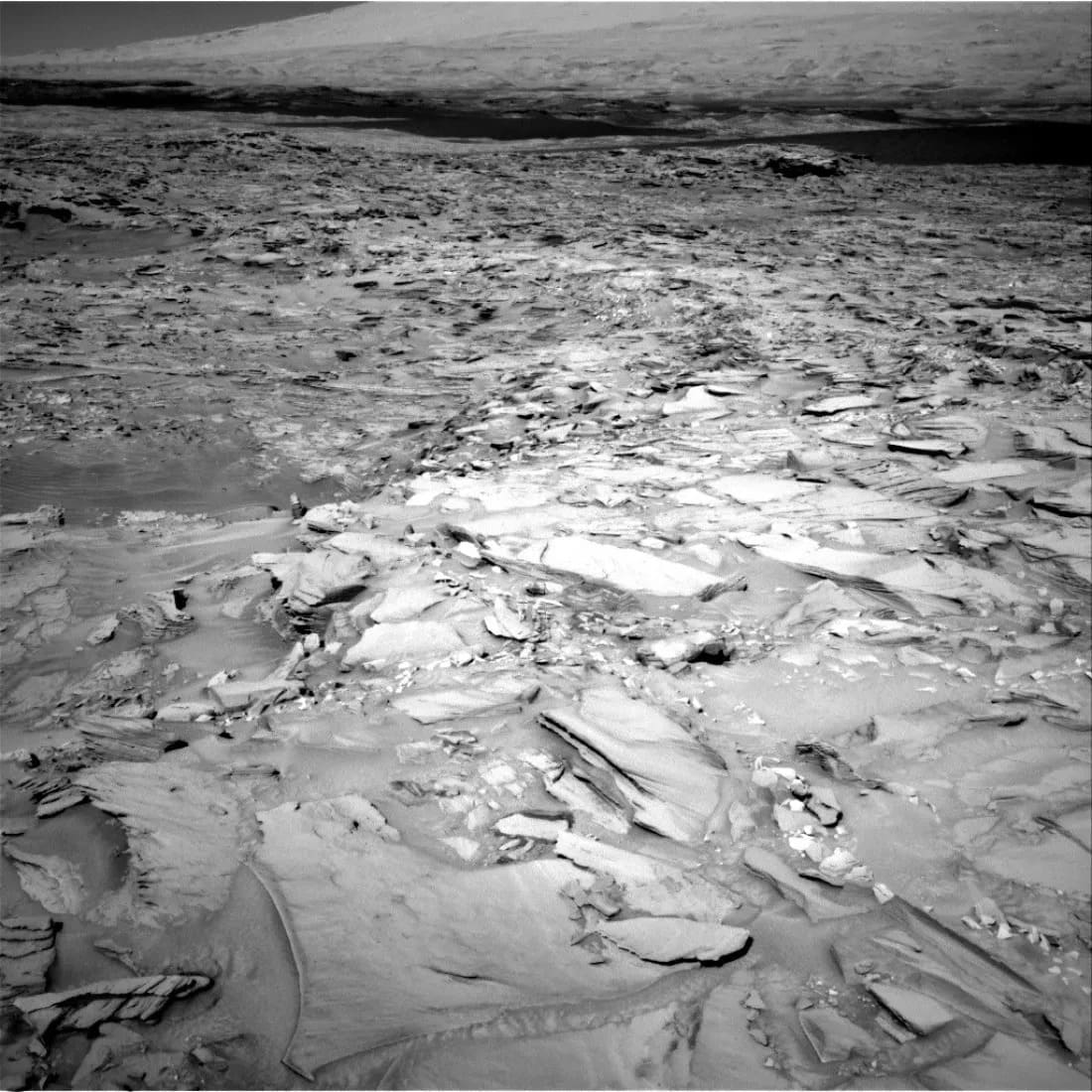
14. Is that a fish fossil or just a rock?
Interestingly, the surface of Mars held an ocean that was larger than the Arctic Ocean found on Earth. In 2016, NASA’s Curiosity rover took a picture of an image that closely resembled a fish. Many people took this as evidence that the Red Planet used to have aquatic inhabitants.
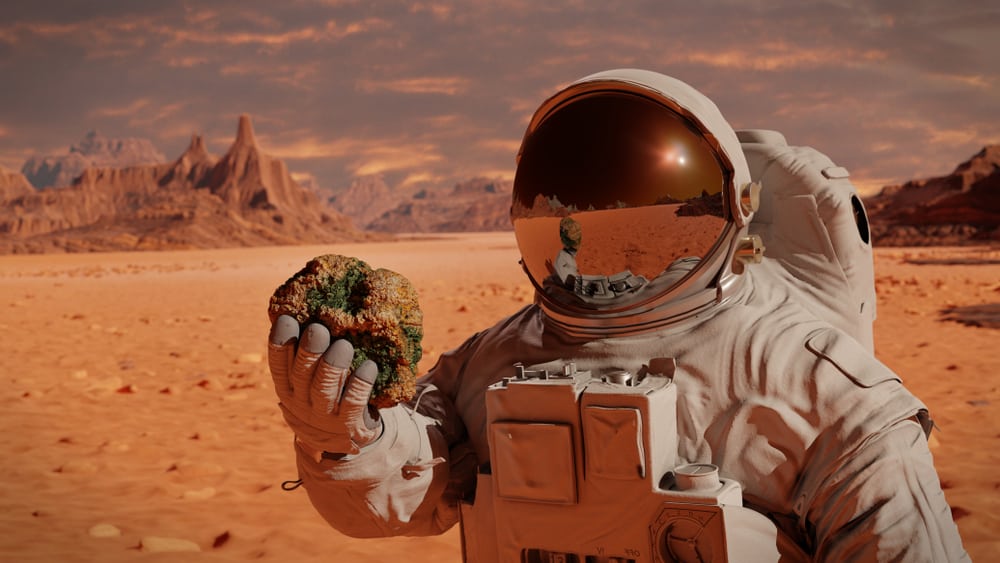
Researchers believe that the fish fossil is nothing more than a uniquely shaped rock. The lighting in the stone’s image and shape make it resemble a swimming fish with an upturned nose and finned tail. While it would be fun to learn that fish once swam happily in Mars’ ocean, it’s more likely that this fish fossil is just an optical illusion.
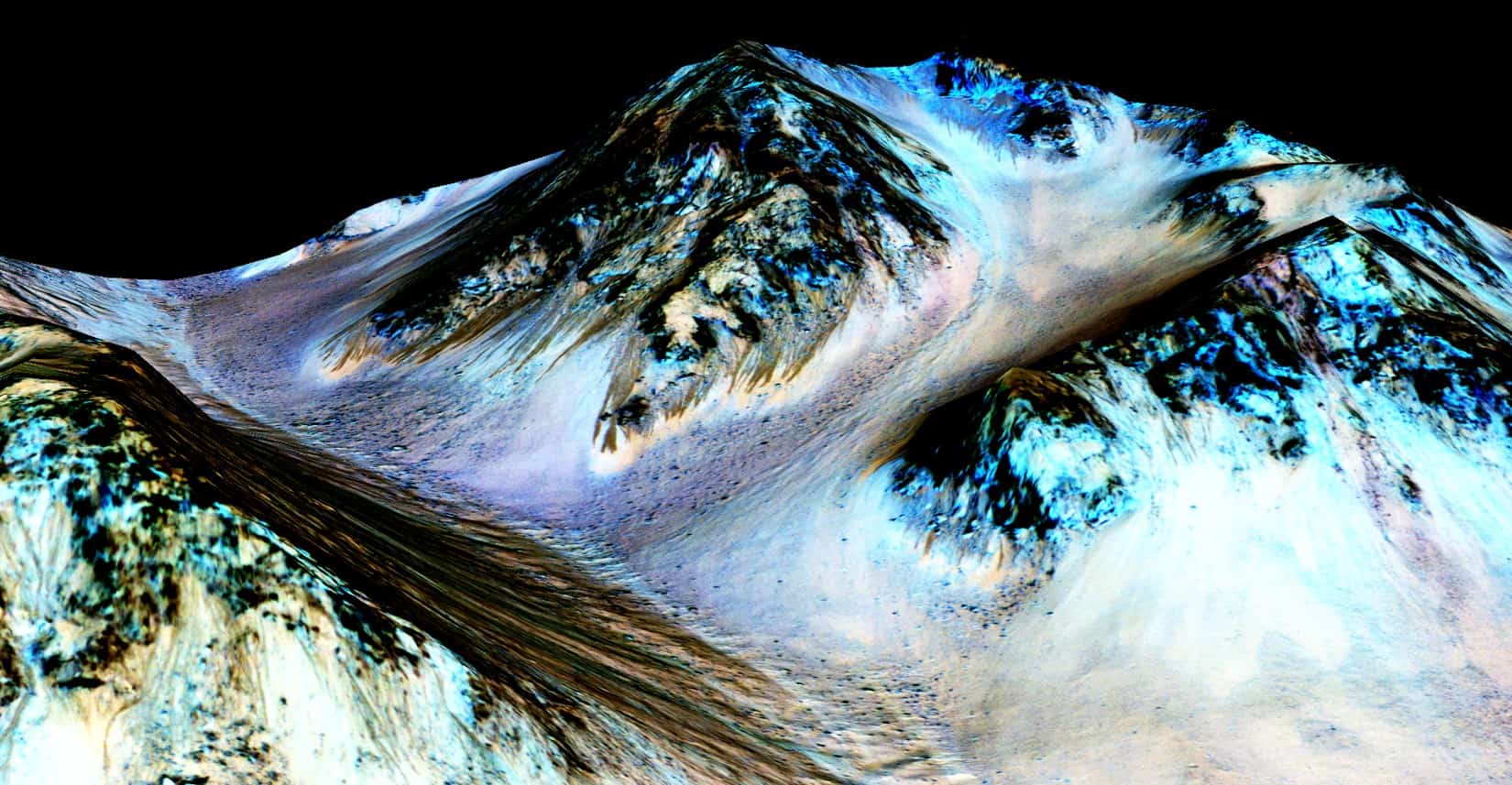
13. So has water been found on Mars?
Yes and no. Scientists have been so anxious to find water on Mars that there have been several times that they have published evidence that there is water on Mars; however, new research shows that their enthusiasm may have been a bit overreached. There is evidence that there was water on Mars in the past, likely large amounts of water. Furthermore, there are probably trace amounts of water in the Martian atmosphere.
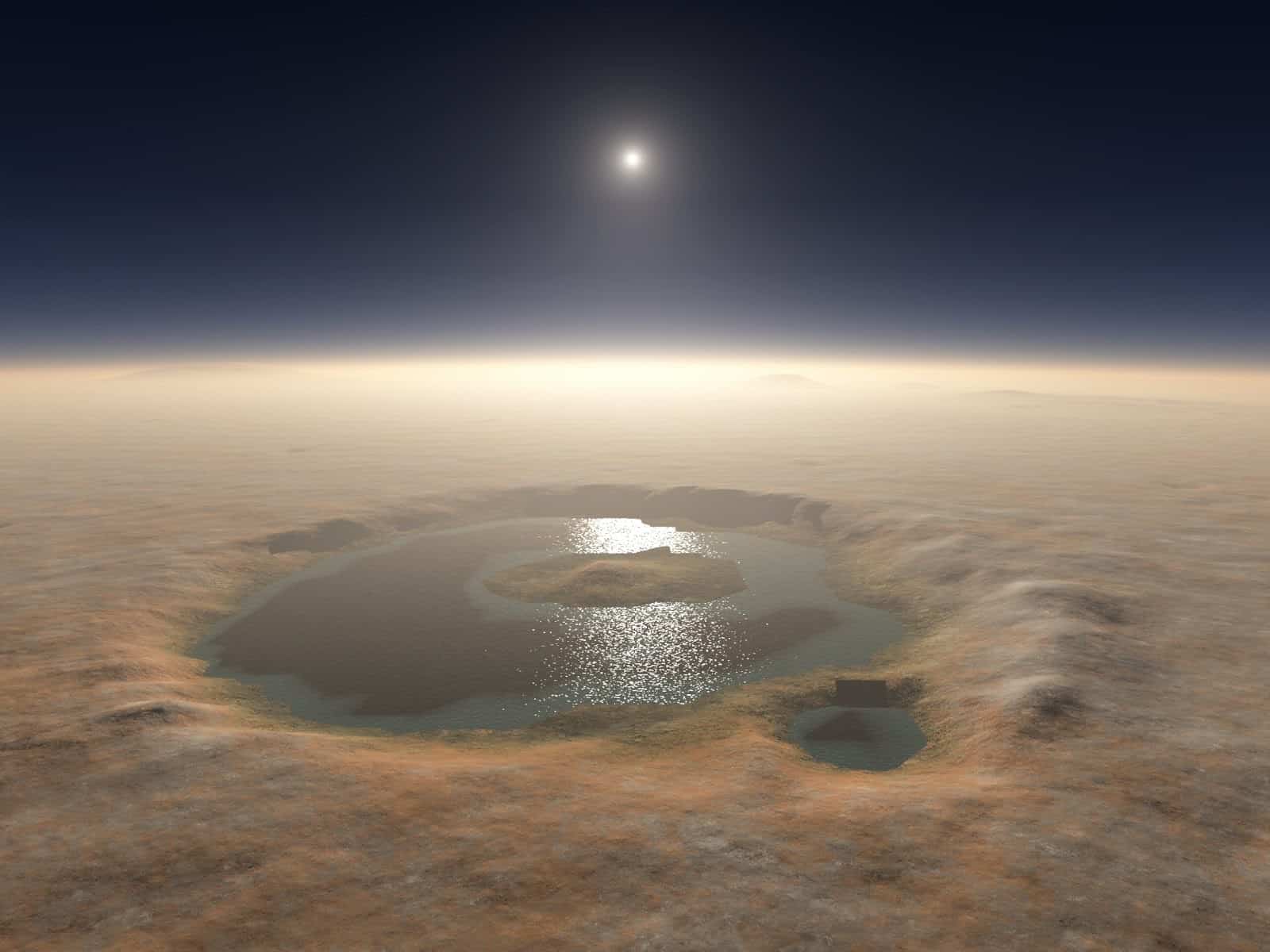
However, there is nothing substantial today, especially not enough for life as we know it. So what happened to Mars’ water? Some of it froze and is at the Martian polar ice caps, though much of that ice is frozen carbon dioxide. A lot of it may have evaporated into space, given that the Martian atmosphere is probably too thin to hold it. Scientists believe that the Martian atmosphere was once much, much thicker than it is today.
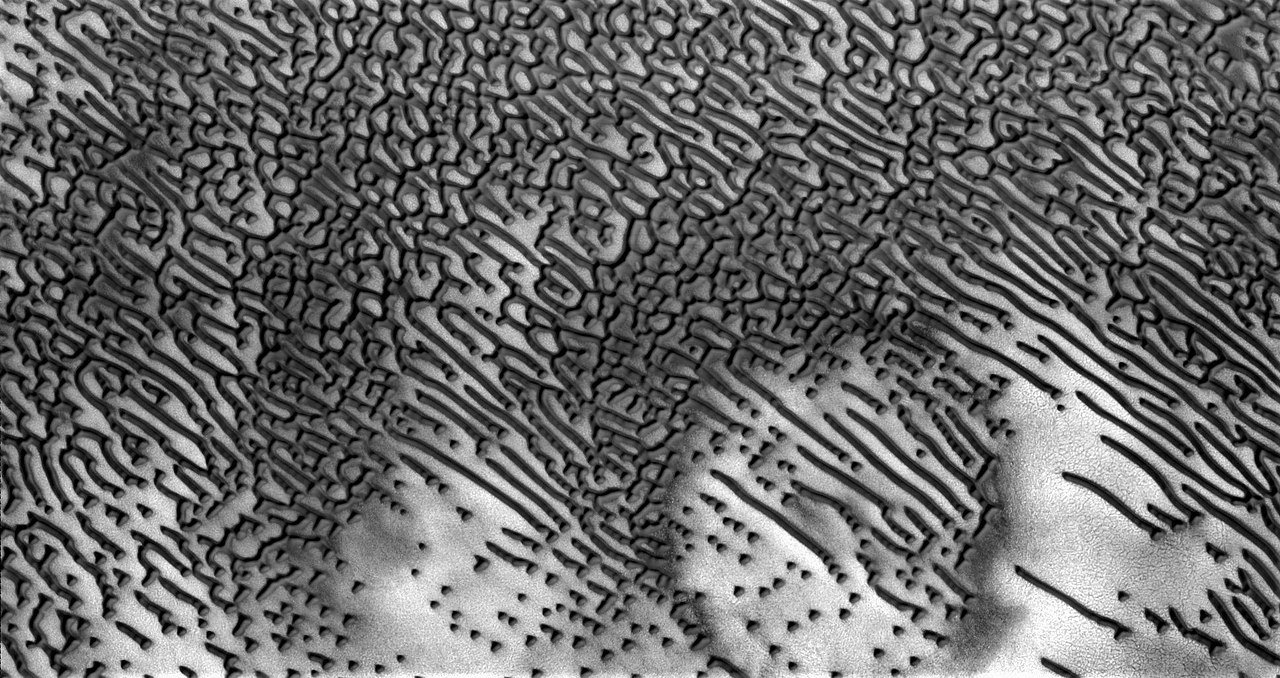
12. The wind seems to have blown Morse code into the Martian surface.
If there were a way for alien life to communicate with us, it would most likely be in code. That’s why the discovery of what looks like Morse code on the surface of Mars is so fascinating. The Mars Reconnaissance Orbiter spotted a large patch of dashes and dots in 2016.
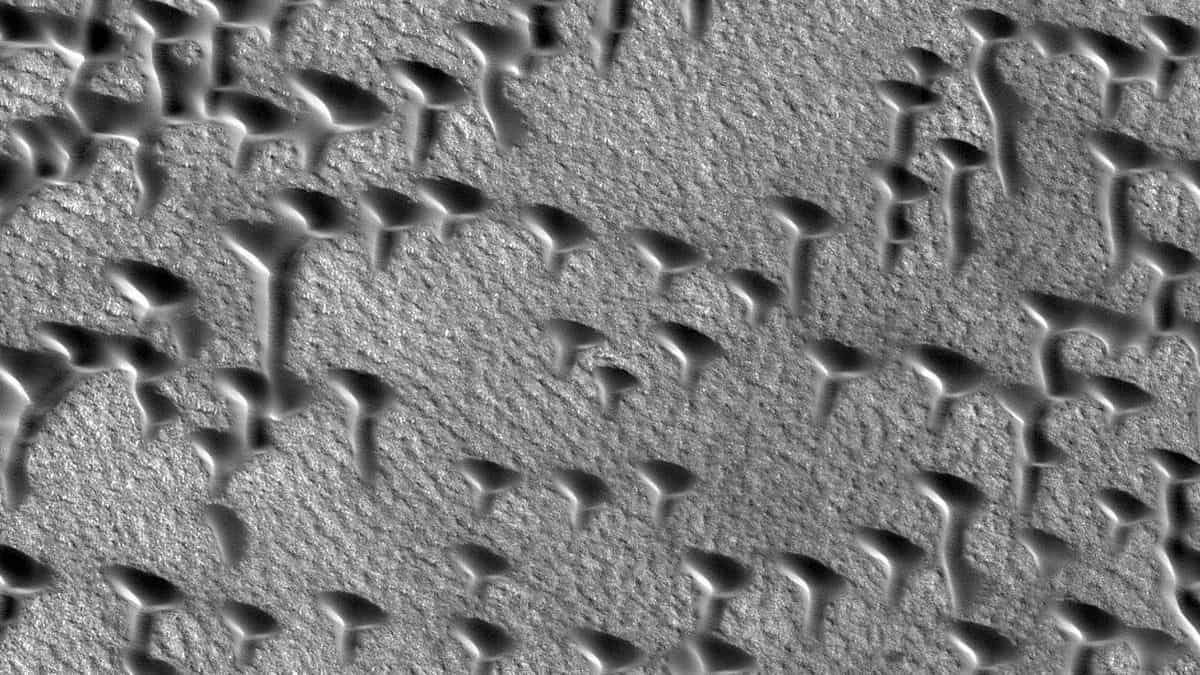
While the message looks like it could be legitimate, it amounts to nothing more than gibberish. The dots and dashes were formed by the wind on the surface of Mars. The area where the patterns were discovered sits inside a crater positioned below the North Martian Pole. The crater’s walls scramble the wind patterns, causing the wind to blow in two different directions. This wind pattern forms the Morse code in the sand of Mars’ surface.
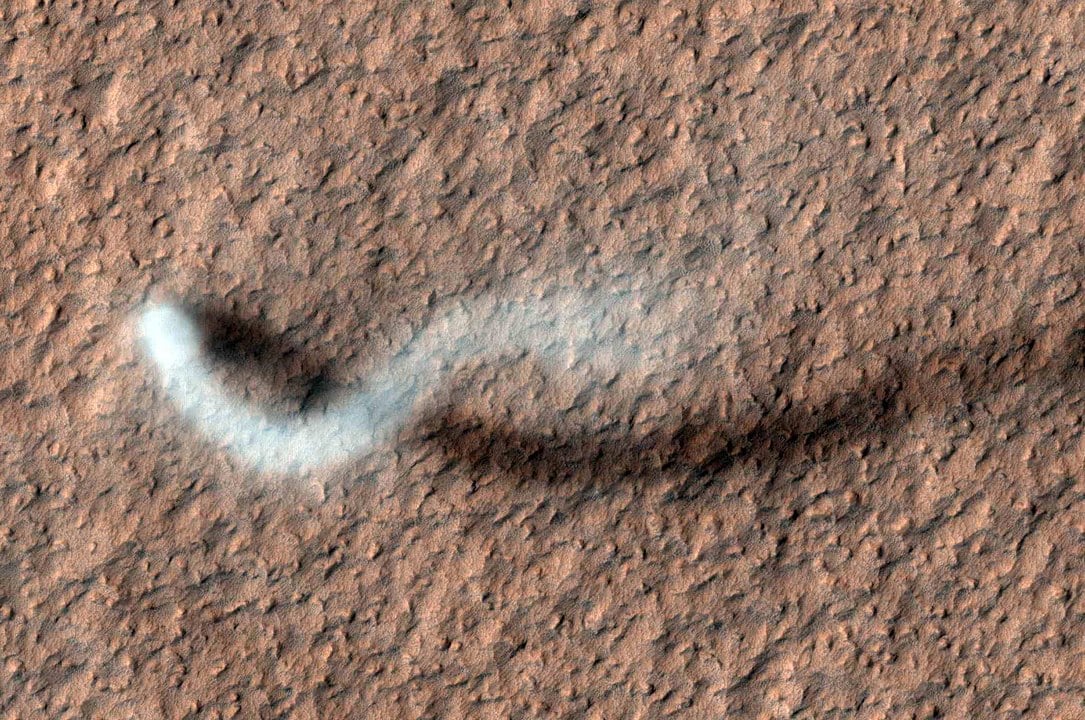
11. Martian dust devils are legit, but not in the way you think.
Summertime on Mars means high temperatures of 68ºF during the day and low temperatures of -130ºF at night. These balmy temperatures can result in electrified dust devils roaming the surface of Mars! While they resemble the dust devils we have on Earth, they’re much more impactful.
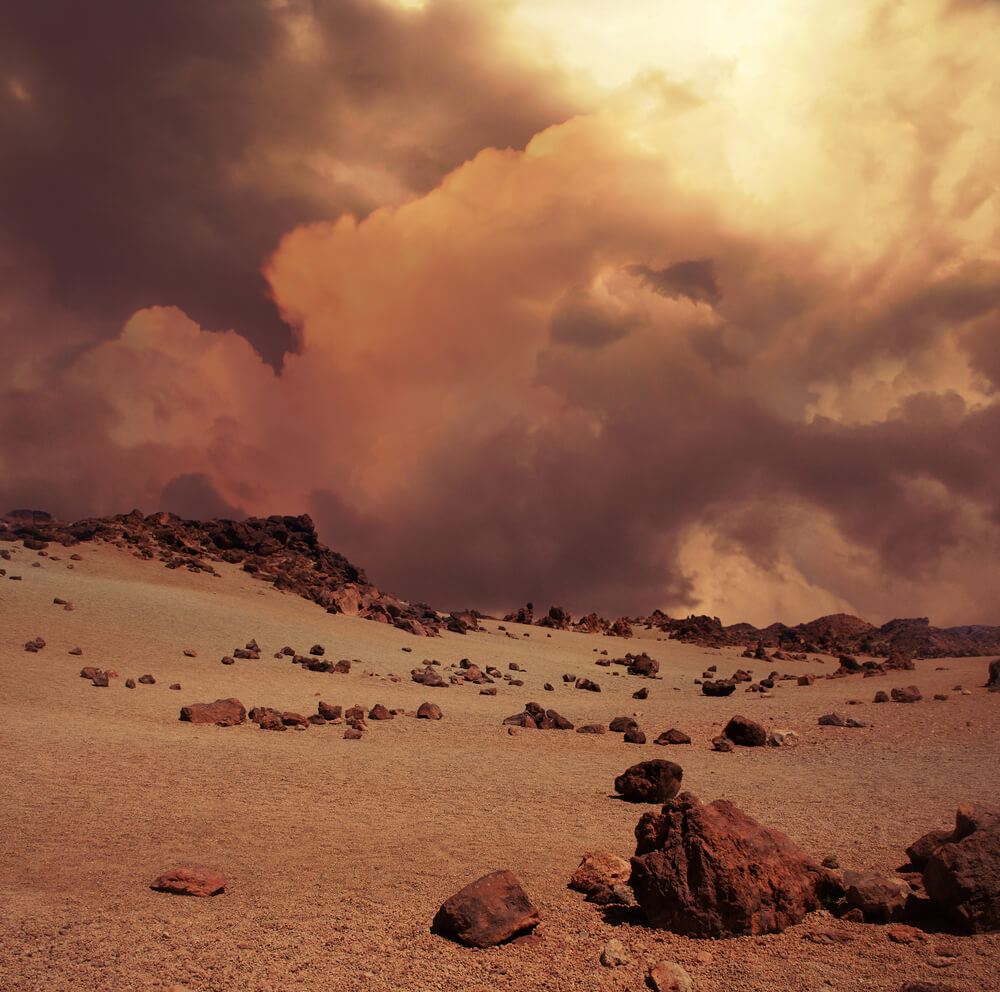
These monster formations are roughly ten times larger than any tornadoes that occur on Earth. They can be many kilometers high and hundreds of meters wide. Dust and red sand whip around at more than 70 miles an hour, reducing the visibility to zero. Although the atmospheric pressure on Mars is low and would cause the wind to be light, a person or object on Mars would be significantly impacted if hit by a high-speed dust devil. Also, the dust devils on Mars have an electric charge, making them even more dangerous. You could potentially see up to half a dozen dust devils during a Martian summer during an afternoon.
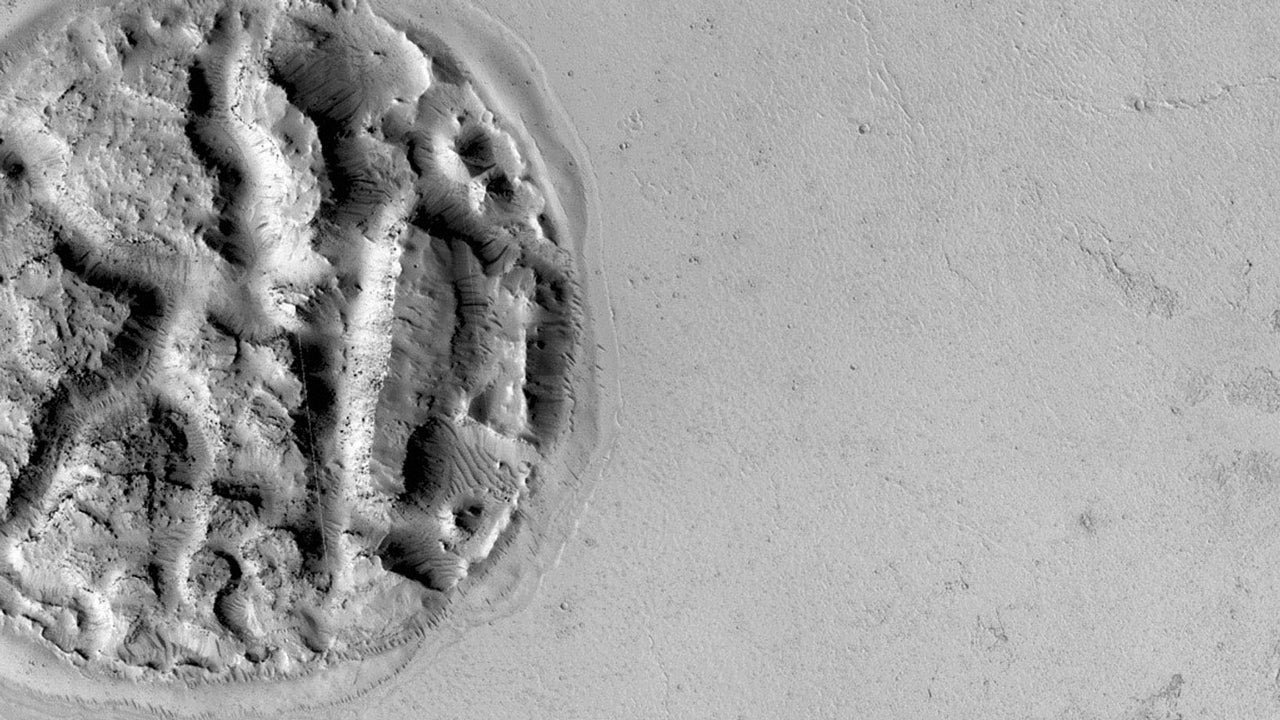
10. There seems to be a giant waffle on Mars, but it’s really lava.
While it may seem like Martians are enjoying a tasty breakfast, a waffle appearance on Mars’s surface has been described as an “enigmatic landform” by NASA. This circular pattern measures 1.2 miles wide and is located in the Athabasca region of Mars.
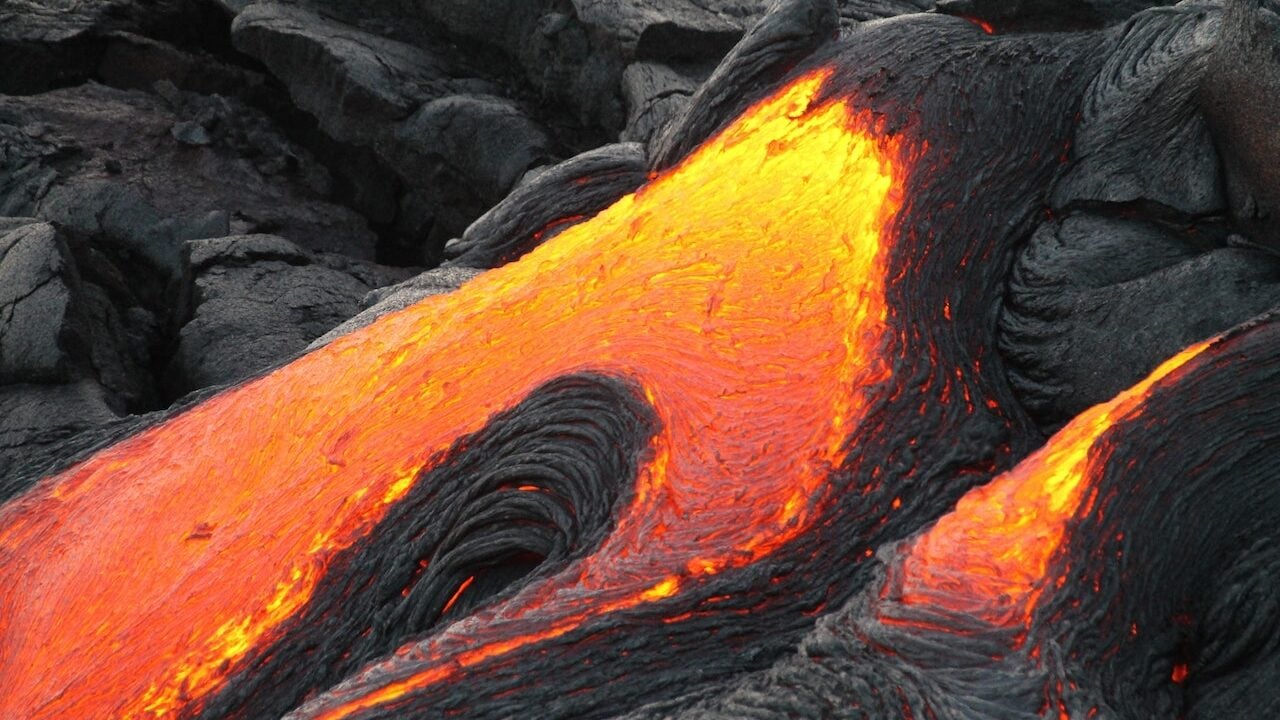
NASA scientists believe that lava is responsible for the waffle-like structure on Mars. They think that lava under the surface came up under the mound, pushing it up. Much ice could have been sitting on the hill elevated by the lava’s heat. Like many other discoveries on Mars, scientists have been trying to find the origins of this structure for several years.
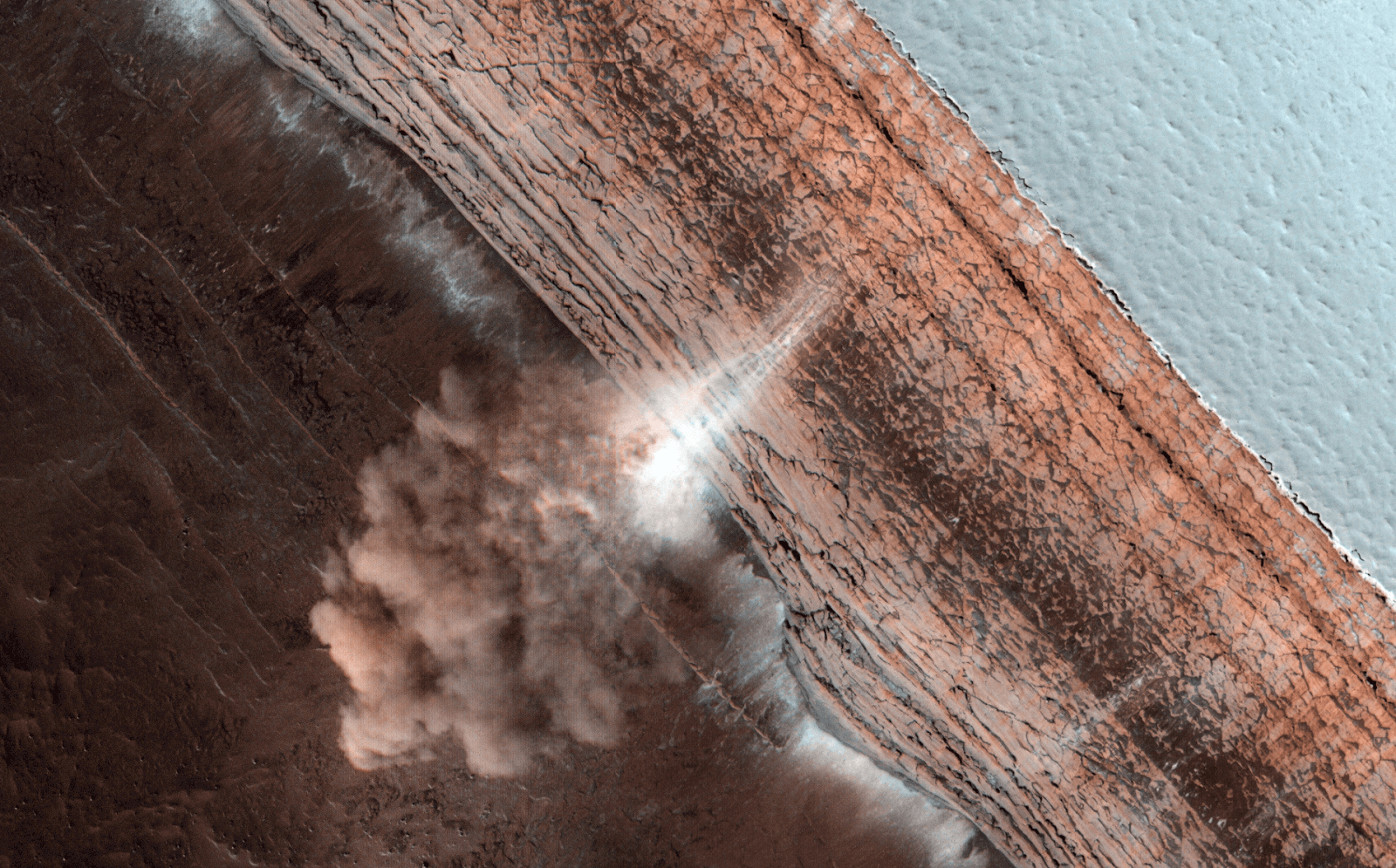
9. Landslides and avalanches happen on Mars.
The first images of an avalanche on Mars were taken in February of 2008. The Mars Reconnaissance Orbiter took pictures of several avalanches near the Martian North Pole. At the time, the Orbiter was looking for changes in carbon dioxide frost during spring, but they happened to stumble upon a series of four avalanches.
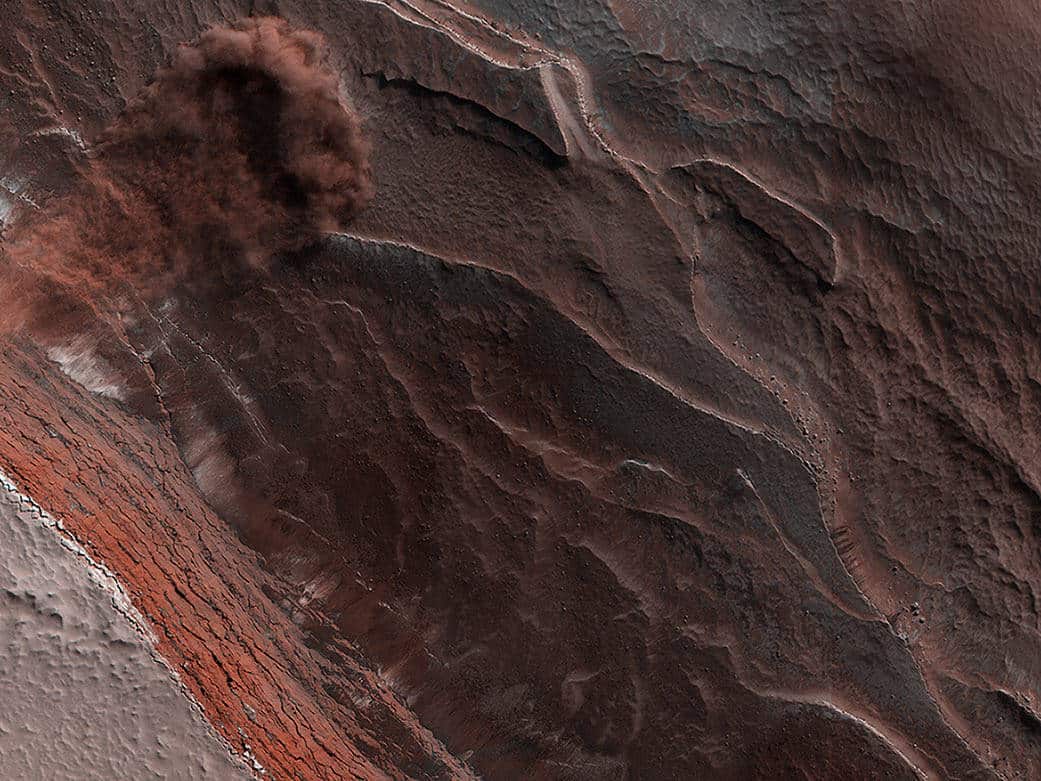
Researchers are still trying to determine what started the landslides. It’s also being determined if the avalanches are seasonal or happen only during spring. Scientists believe that most of the material dropped in the torrents is ice rather than dust. These avalanches are another way for NASA scientists to explore possible water sources on Mars.
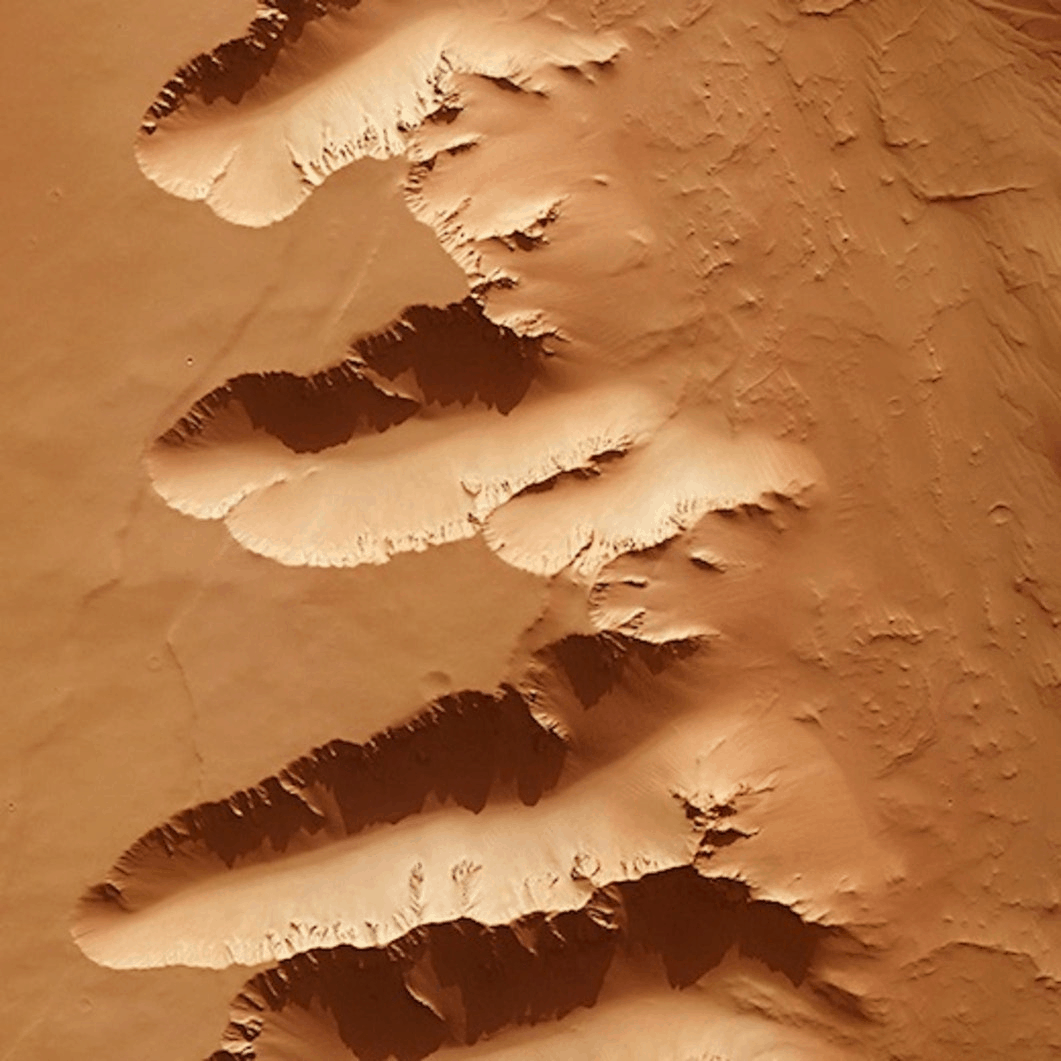
8. Volcanoes on Mars created a giant labyrinth.
There’s an area on Mars between the Tharsis upland and Valles Marineris known as the Noctis Labyrinthus. A maze-like area with steep-walled valleys marks this region. It’s believed that volcanic activity contributed to landslides and disturbances, leading to rougher, pit-like formations on the surface.
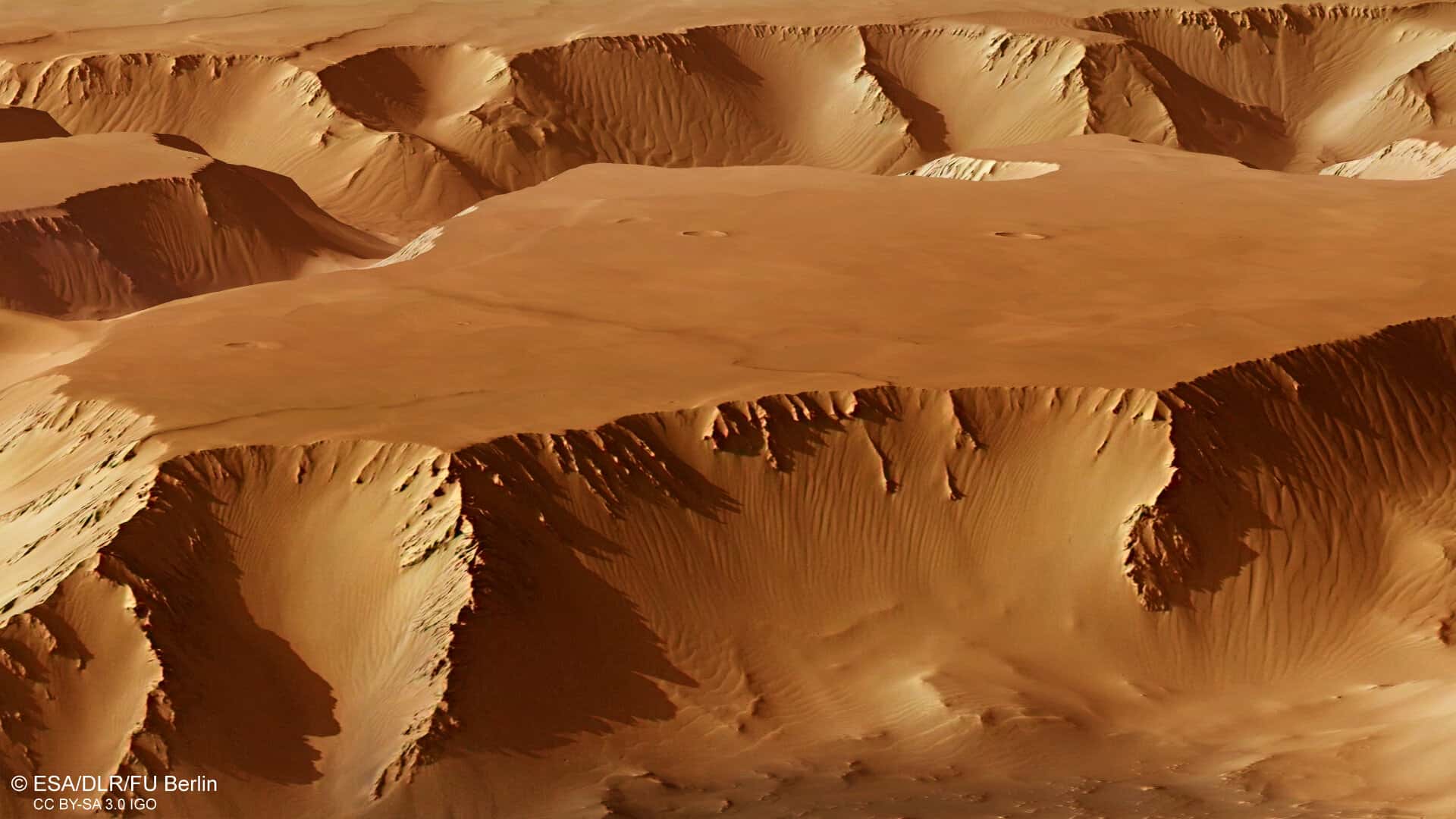
The depth of the craters is determined by how far below the surface lava is present. Experts say that a complex lava tube network resides under this area, causing the labyrinth appearance. This vast region stretches more than 745 miles, roughly the same length as the Rhine River as it extends from the Alps down to the North Sea. In some areas, wind draws dust into the plateaus of the Noctis Labyrinthus.
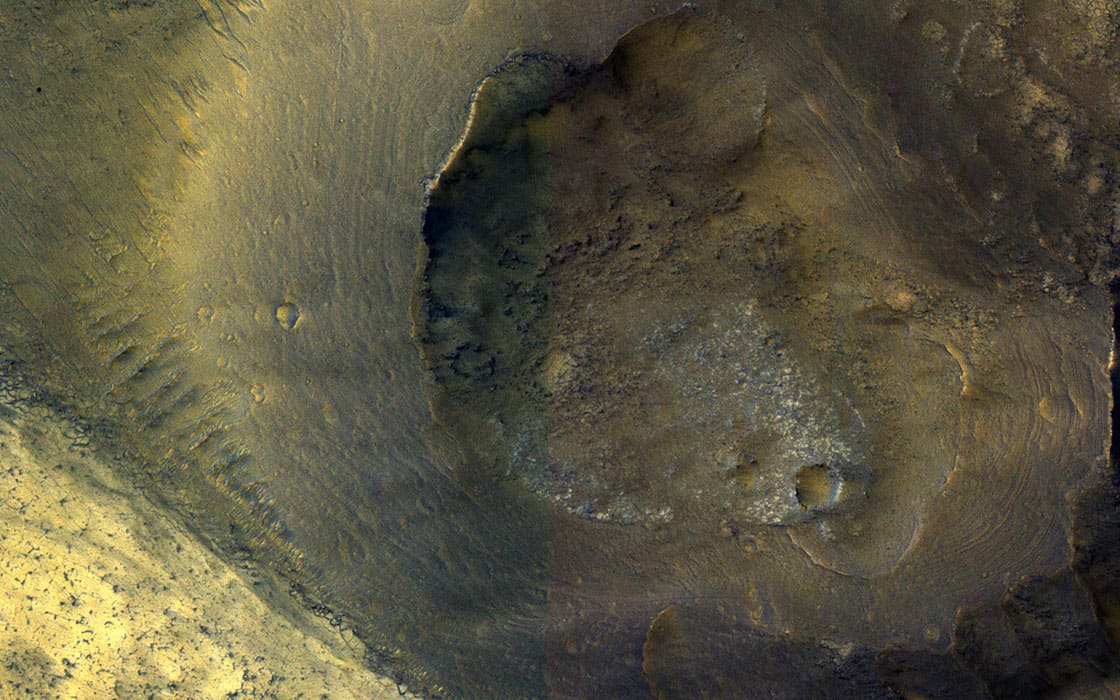
7. And yes, Mars has massive volcanoes.
Mountains filled with magma from the Earth’s mantle and occasionally spew it out in magnificent eruptions are somewhat familiar on Earth, but did you know that there are volcanoes in other parts of the solar system, as well? Scientists have found volcanoes on different moons, especially those orbiting Jupiter and Saturn, as well as on Mars.
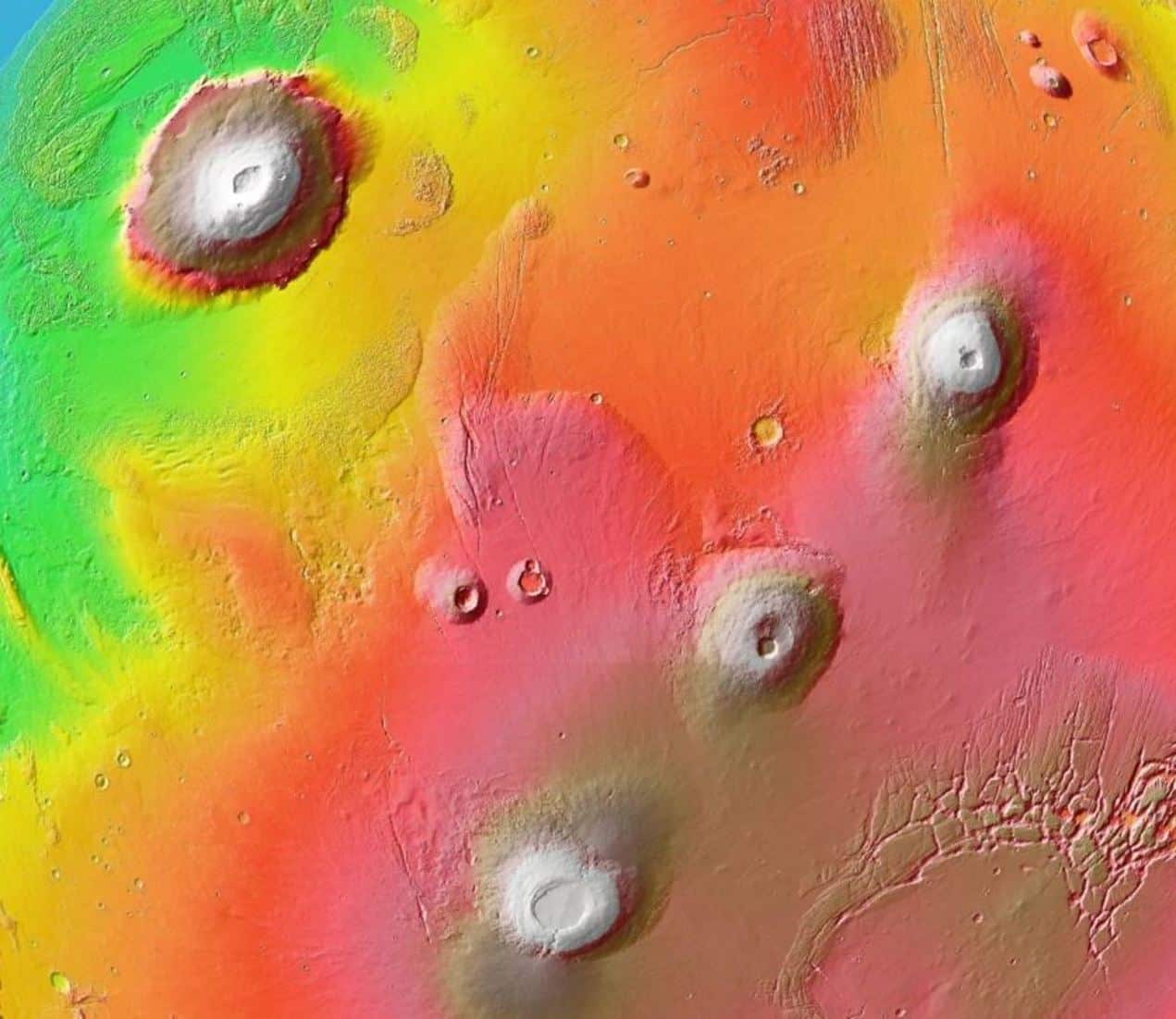
There is so much volcanic activity on Mars that scientists have subdivided the planet into provinces based on its volcanoes. Olympus Mons is a volcano on Mars that is the largest known volcano in the entire solar system. And if you are familiar with Greek and Roman mythology, you know that Olympus Mons means Mount Olympus, where Mars, the god of war, lived.
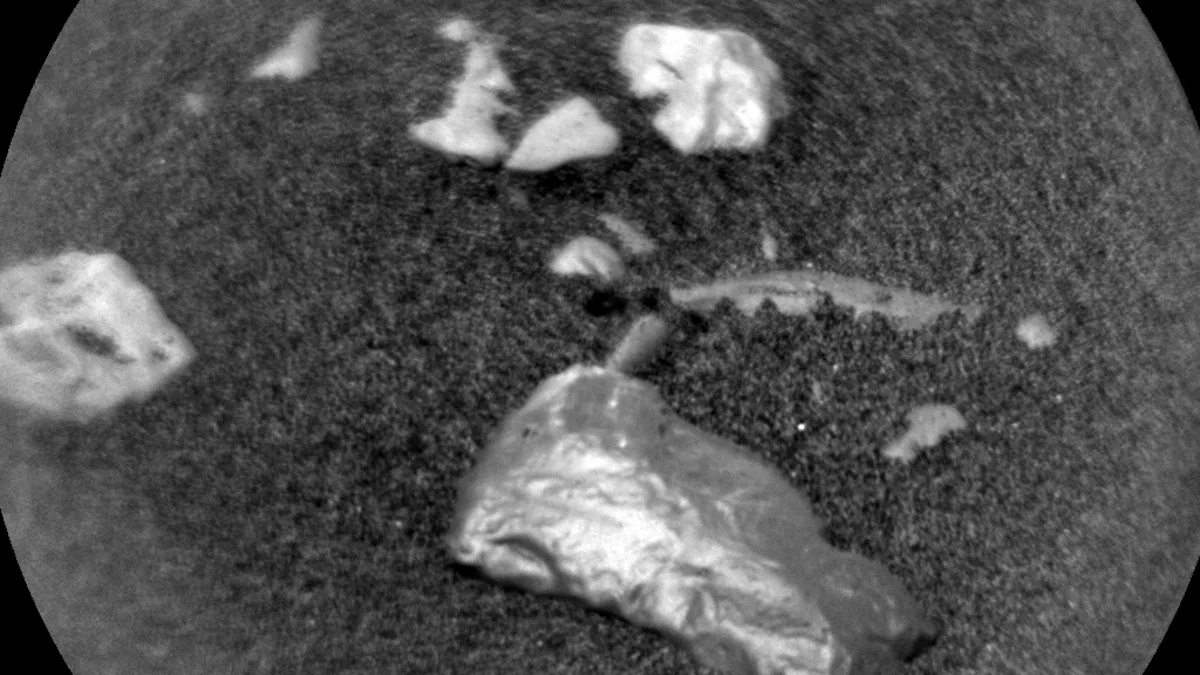
6. A bird, a plane… a shiny meteorite chunk on Mars.
In late 2018, the Curiosity rover captured images of a gleaming object. Resembling a small chunk of gold, NASA scientists named the formation Little Colonsay. It’s believed that this shiny rock could potentially be a piece of meteorite.
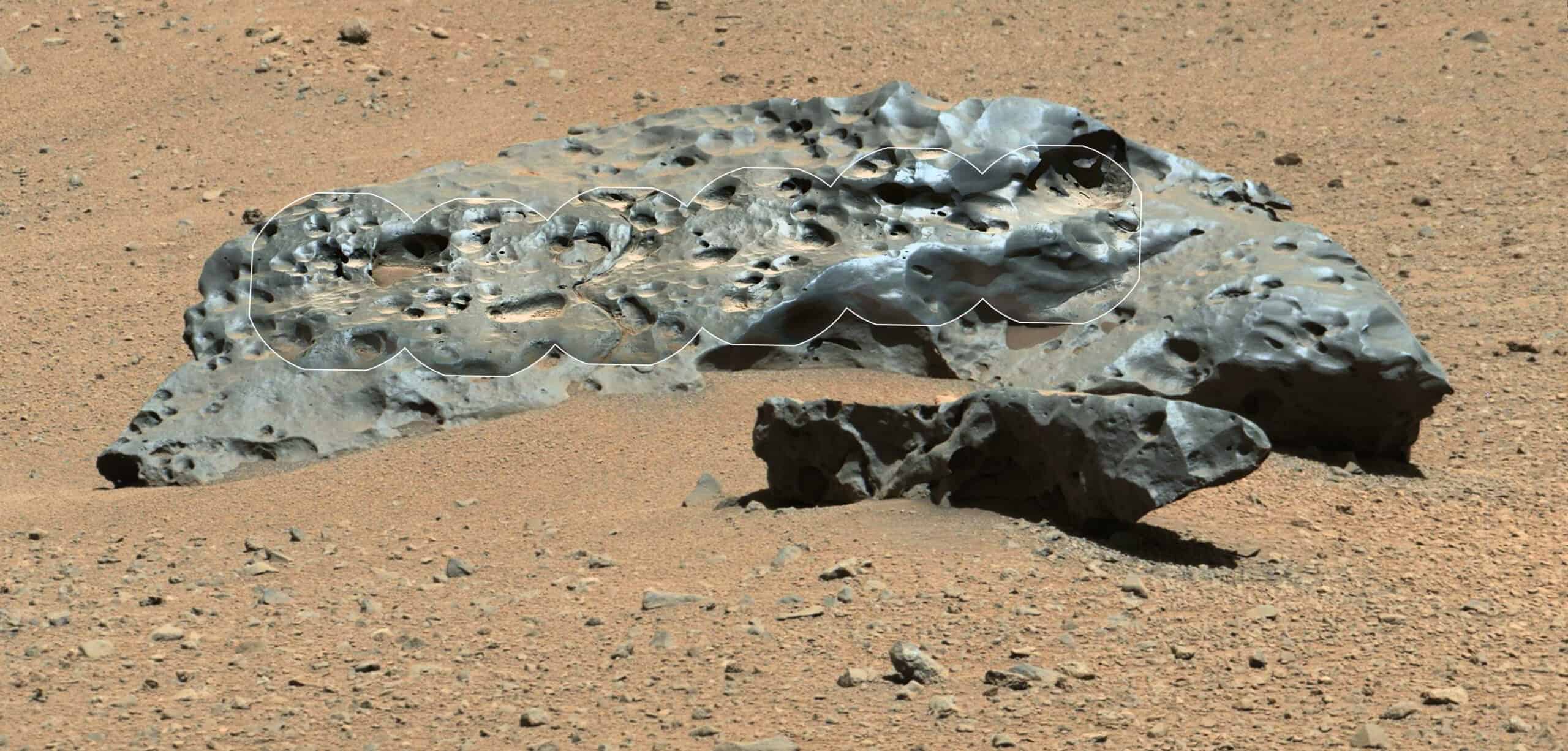
Because the Red Planet’s surface is mostly dusty, it’s apparent when something shinier is present. Researchers are doing chemistry testing to determine if Little Colonsay is, in fact, a meteorite. NASA scientists use a variety of instruments known as ChemCam to perform experiments straight from the rover. A piece of the iron meteorite was found on Mars in 2008, so another meteorite may have been discovered.
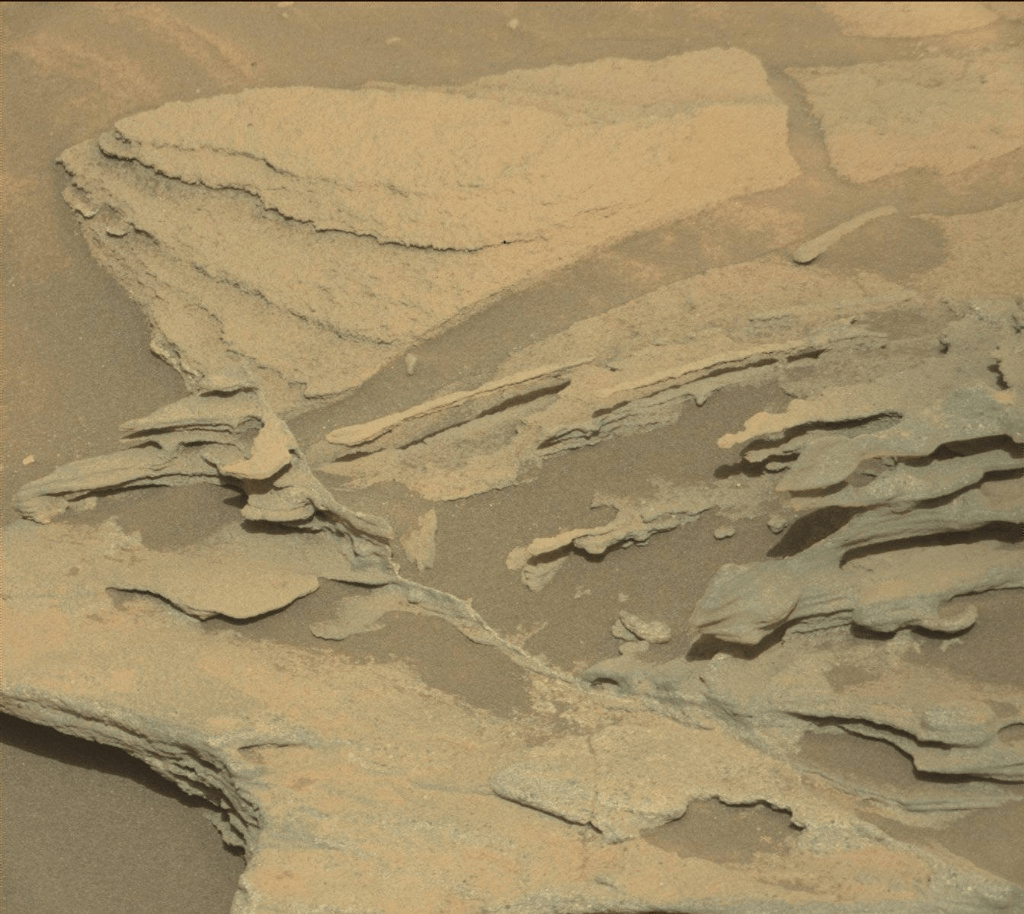
5. Did a Martian leave his breakfast spoon floating in mid-air on Mars? No, it’s another rock.
Could a floating spoon on Mars be evidence of alien life? On NASA’s Curiosity rover’s 1,089th day on Mars, it captured an image of a spoon-shaped object seemingly floating in mid-air. The floating spoon even left a shadow below it.
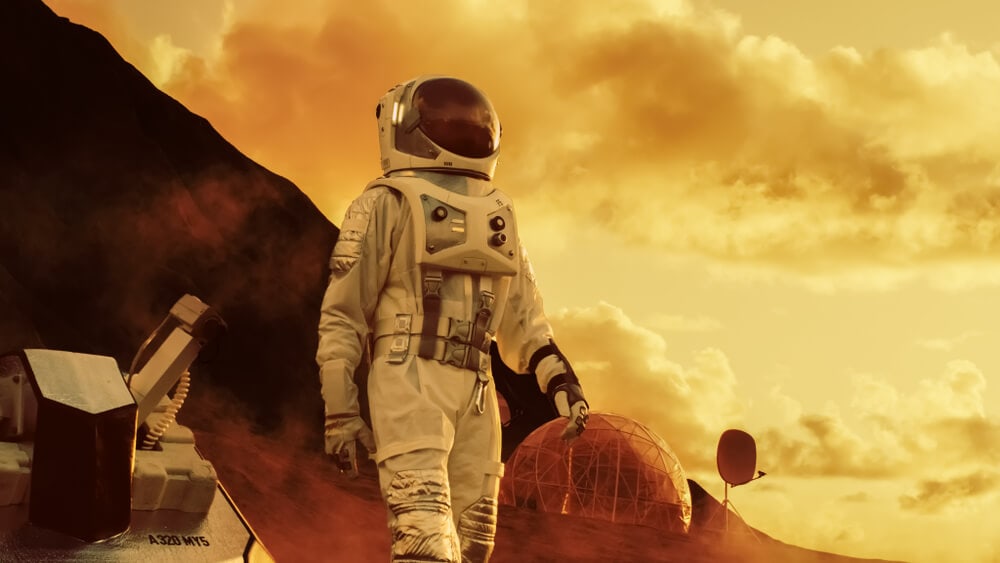
NASA researchers determined that the floating spoon was just a rock. The unique shape of the spoon was caused by wind erosion. Like many of the objects that have been photographed before, this one is an optical illusion. However, it would still be fascinating to see items that resemble what we use on Earth present on other planets.
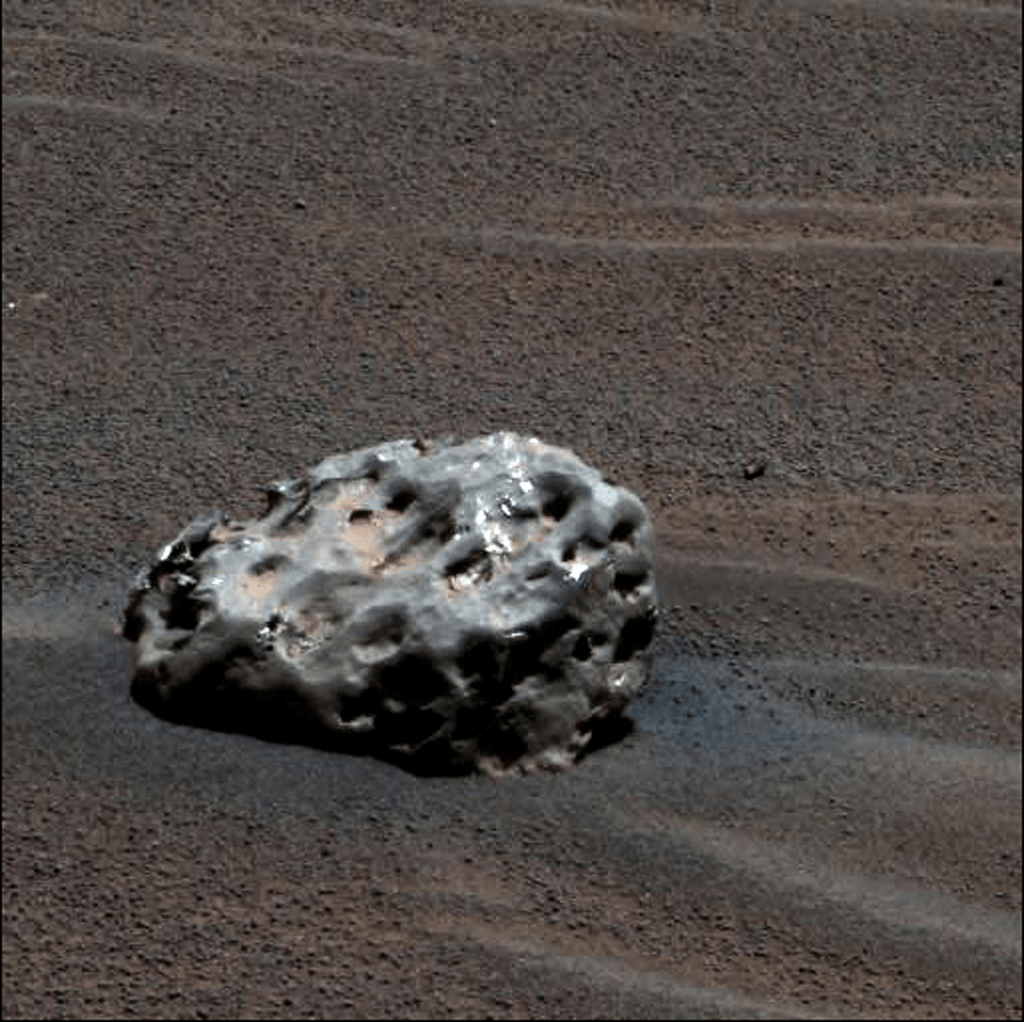
4. Scientists found the first extraterrestrial meteorite ever on Mars.
On January 6, 2005, the first-ever meteorite to be located on another planet was found. Meridiani Planum is the area of Mars known for being the home of many meteorites, and the first one was discovered there. The first meteorite found on Mars is known as Heat Shield Rock because it was located near the area where the Opportunity rover’s heat shield landed.
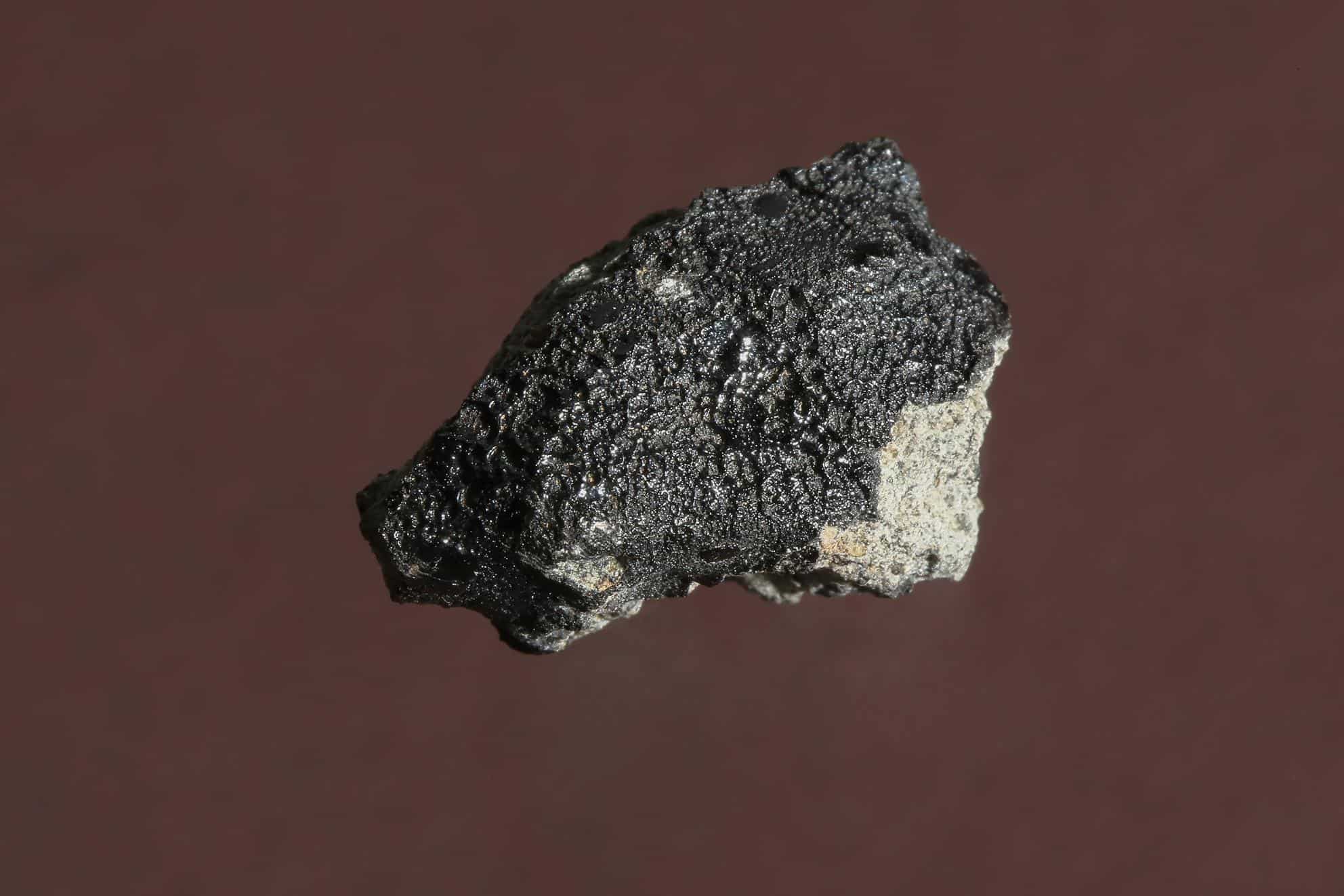
NASA’s Curiosity Rover surveyed the meteorite and determined that it was mostly made of iron and nickel. The meteor was about 93% iron and 7% nickel. This rock was about the size of a basketball. Research into the heat shield rock shows that the area was flooded with water several times over a period of a billion years, contributing to sulfates in the sand, which formed to build large crystals.
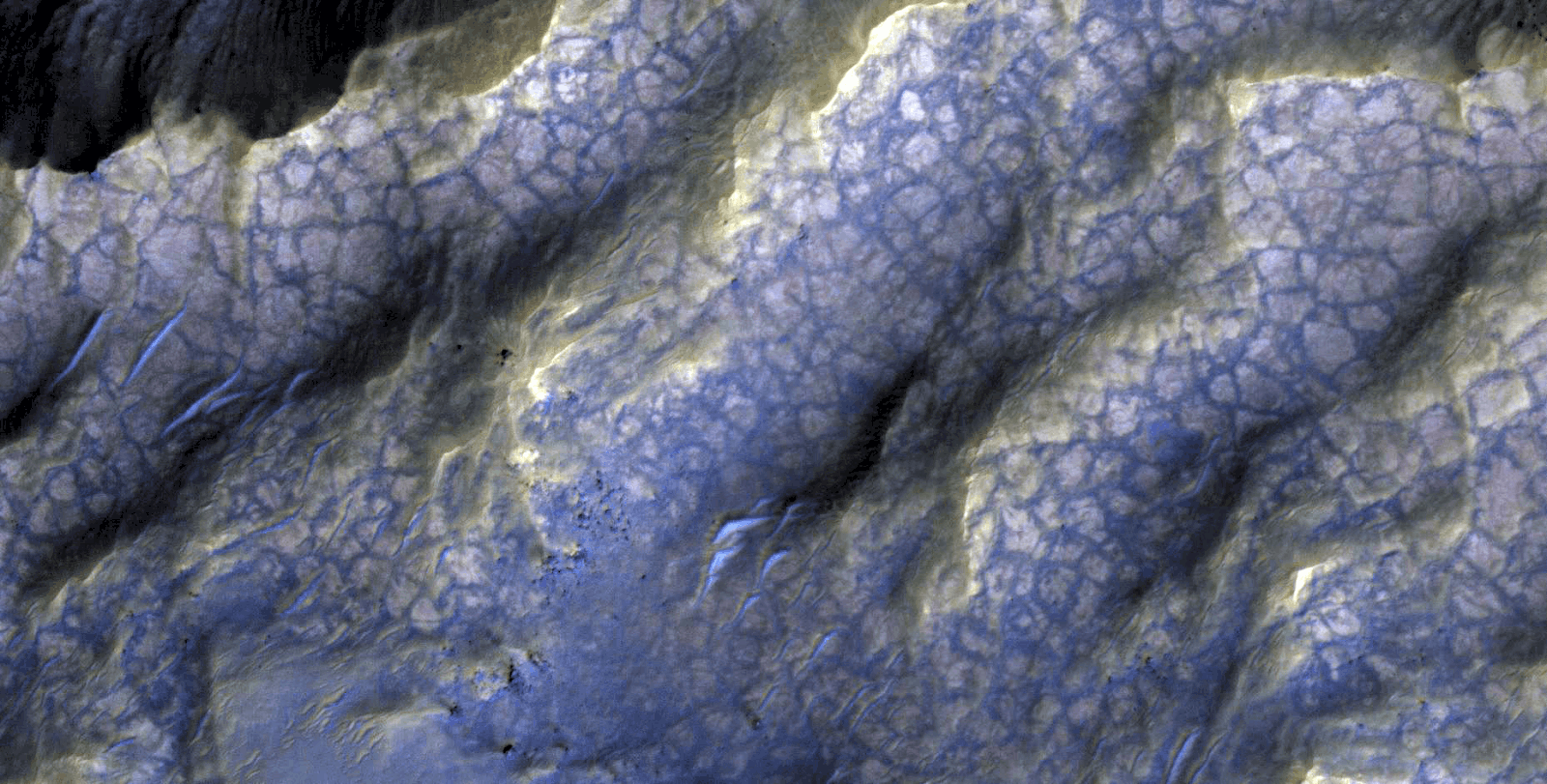
3. A pattern resembling dragon scales is etched into the Martian surface.
In 2017, the Mars Reconnaissance Orbiter took images of a pattern that looked close to mystical dragon scales. Etched into the surface of the Red Planet, the pictures showed a pink-hued, iridescent way. The rugged nature of the design left scientists wondering what caused the formation.
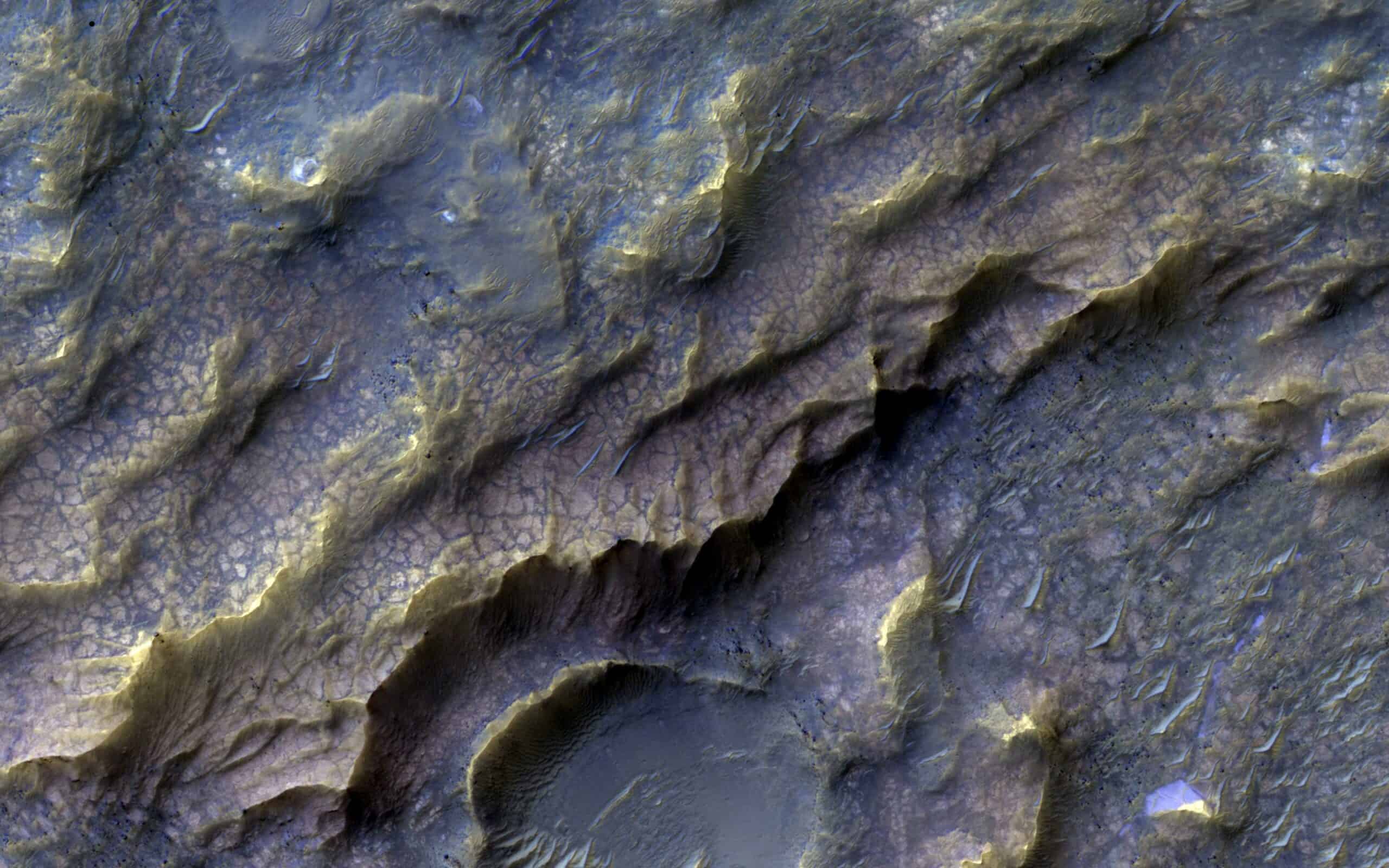
Most likely, Mars’ dragon scales were caused by interactions between water and rocks on Mars billions of years ago. Water is mixed with the stone to form a clay-like substance. The wind then eroded areas of the clay, resulting in the dragon-scale appearance. Discoveries like this help NASA researchers better understand what Mars’ atmosphere and climate were like in its early days. It’s believed that Mars’s original weather was colder and drier than previously thought, and it did not have an Earth-like quality.
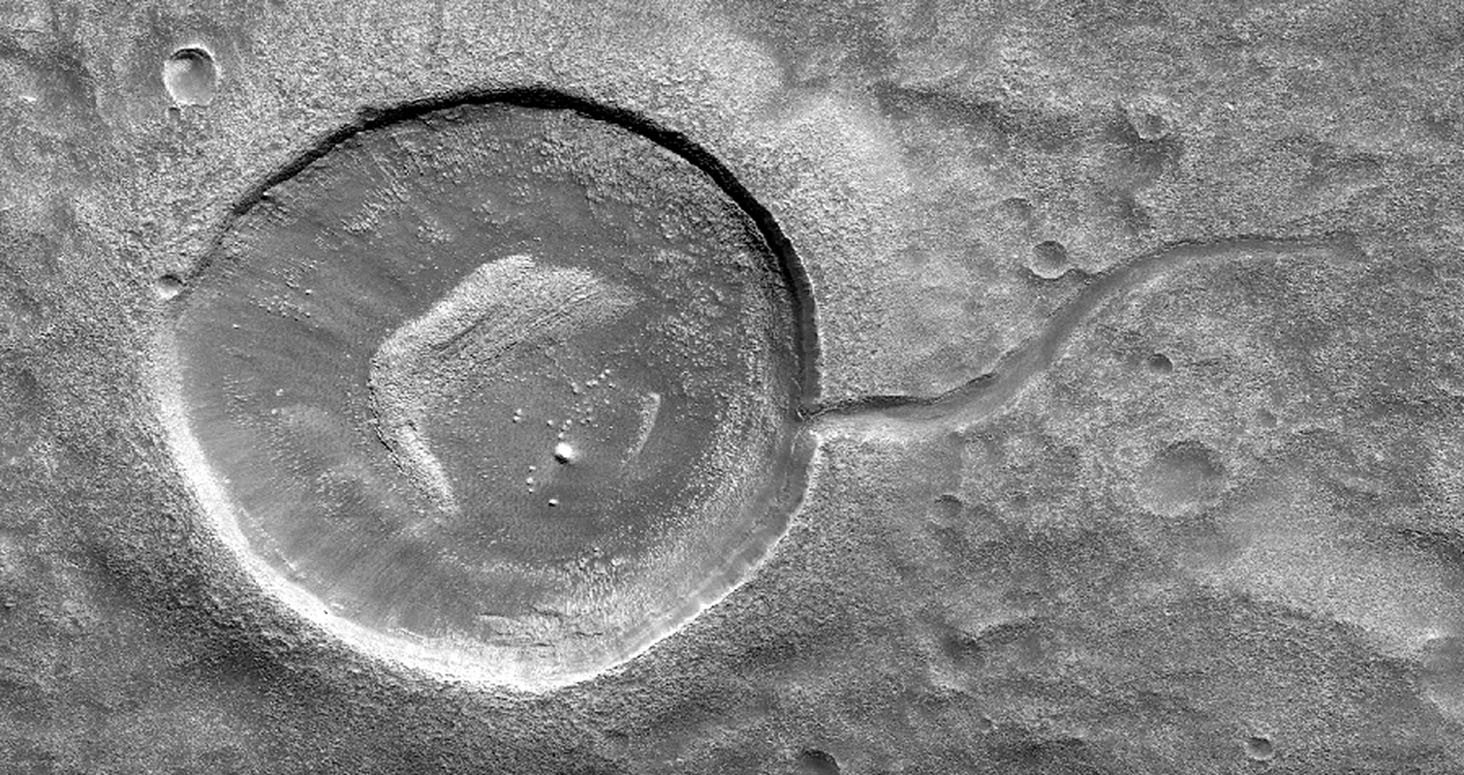
2. One image shows what looks like a giant tadpole on Mars.
Human life hasn’t been discovered on Mars, but has there been evidence of animals on the Red Planet? In early 2018, the hard-working Mars Reconnaissance Orbiter captured images of what looks like a massive tadpole with a tail. A researcher determined that it was, in fact, an impact crater. Furthermore, the “tail” was caused by water used to travel in and out of the crater.
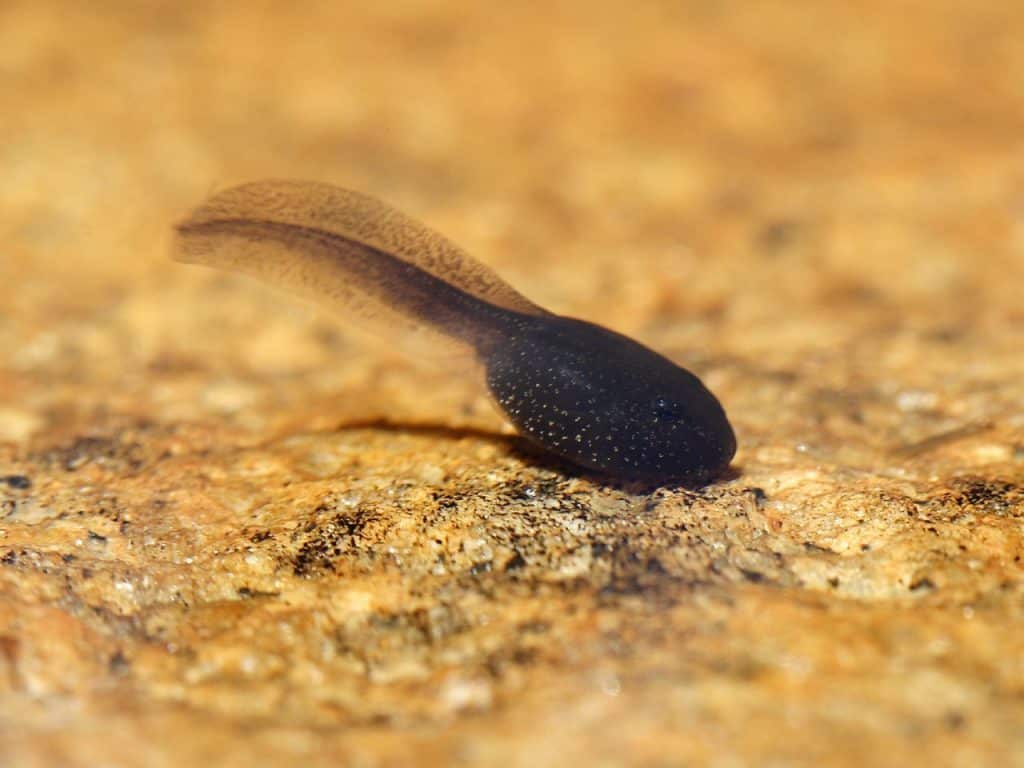
Although Mars is now dry, evidence shows that there used to be water on the Red Planet’s surface. This tadpole crater further supports this theory. The tail of the tadpole was carved by water flowing out from the hole and going downhill. Scientists determined that the water was traveling out from the crater based on the surrounding terrain’s height.
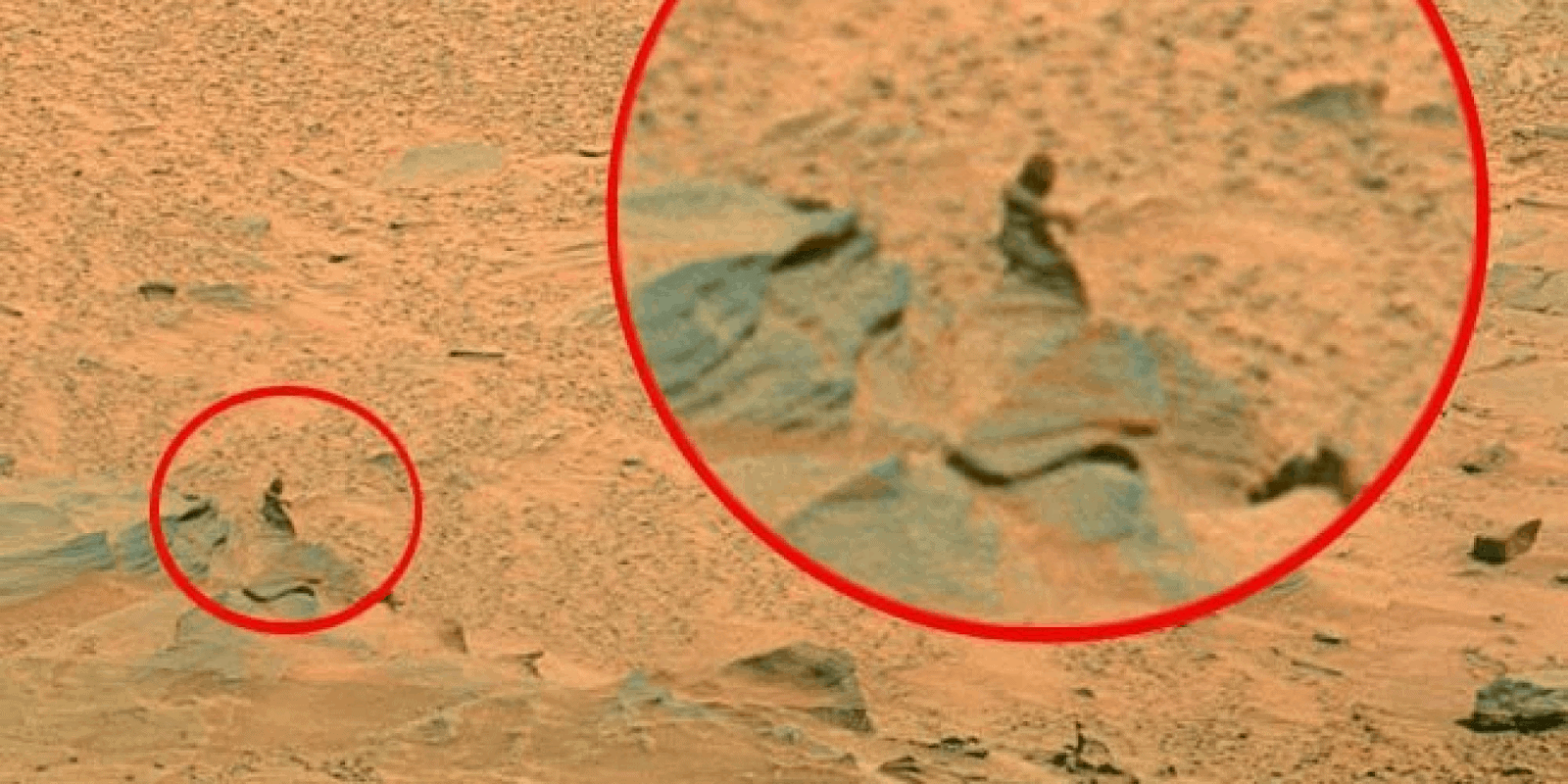
1. There seems to be a person on Mars already, but it is just a rock — again.
Many space enthusiasts are excited about the possibility of there being life on Mars. When most people think of Aliens, they think of Martians, right? That’s why an image taken on Mars’s surface in 2007 ignited conversations about life forms on Mars.
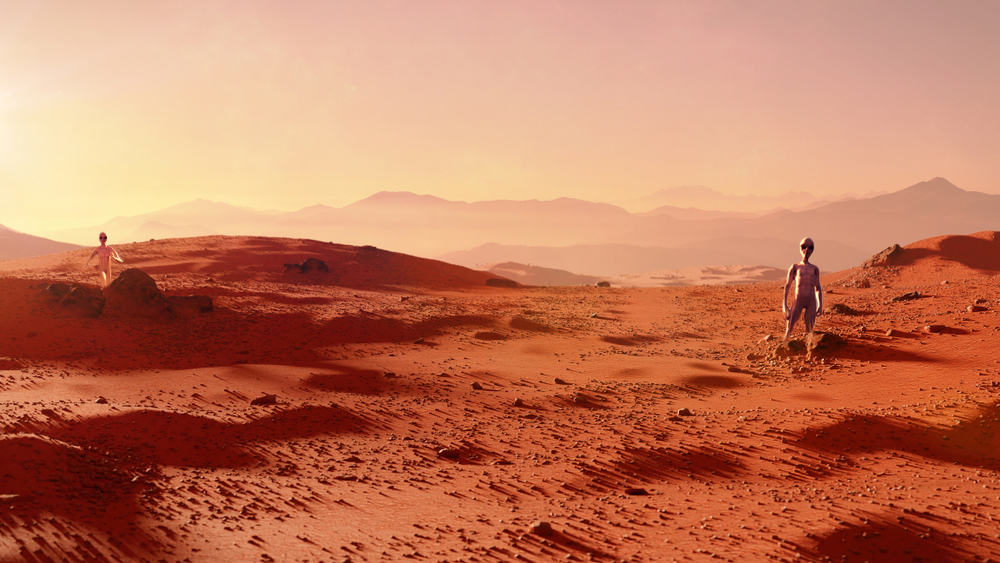
Opportunity’s twin rover named Spirit captured images of what looked like a female figure walking around on Mars. According to scientists, it’s just a rock. Millions of years of winds created a small rock just a few inches high that looks human on camera. As humans, we are built to see familiar things in the world around us. It’s natural to spot an object like this and associate it with humans on Earth.

